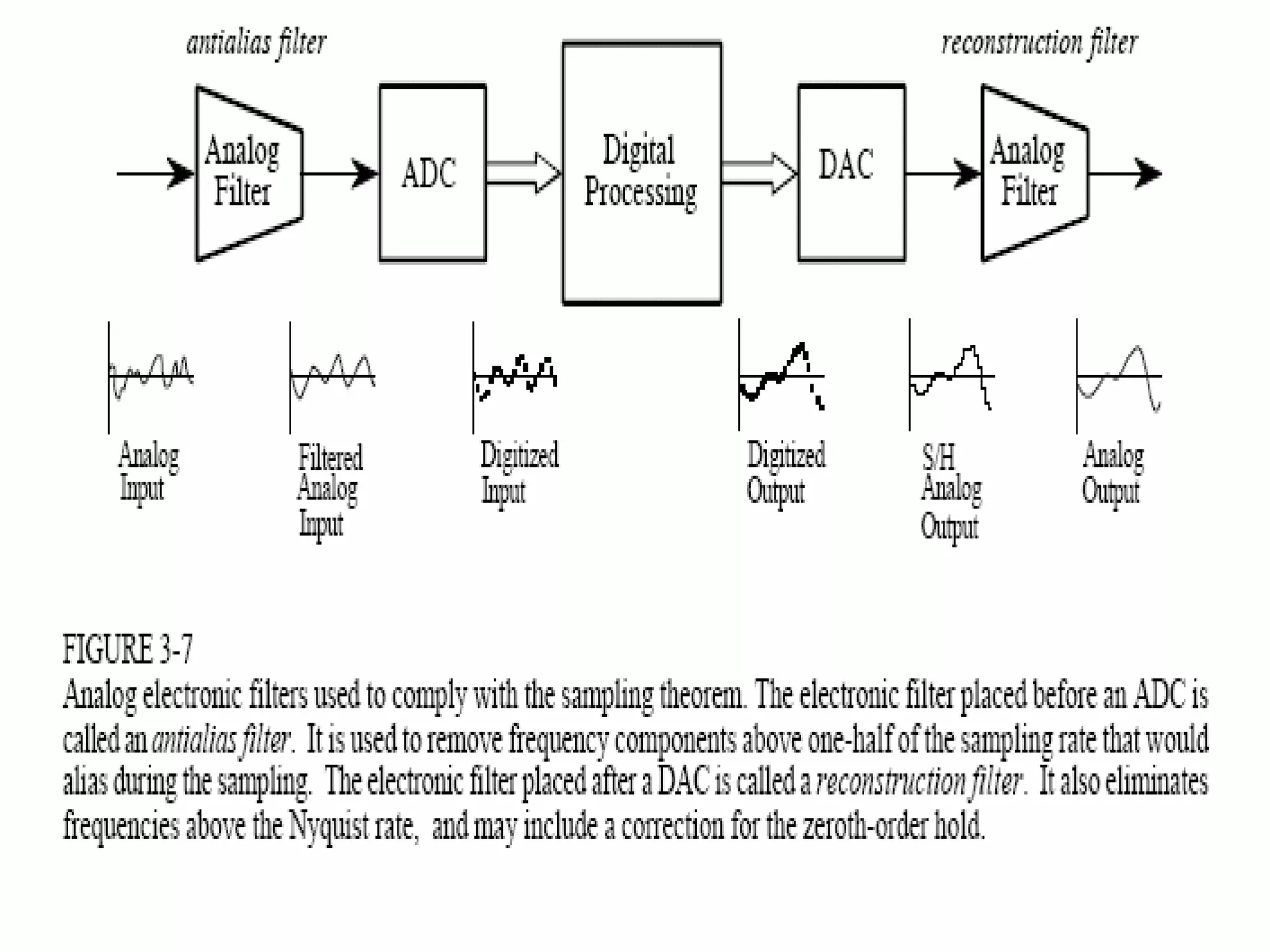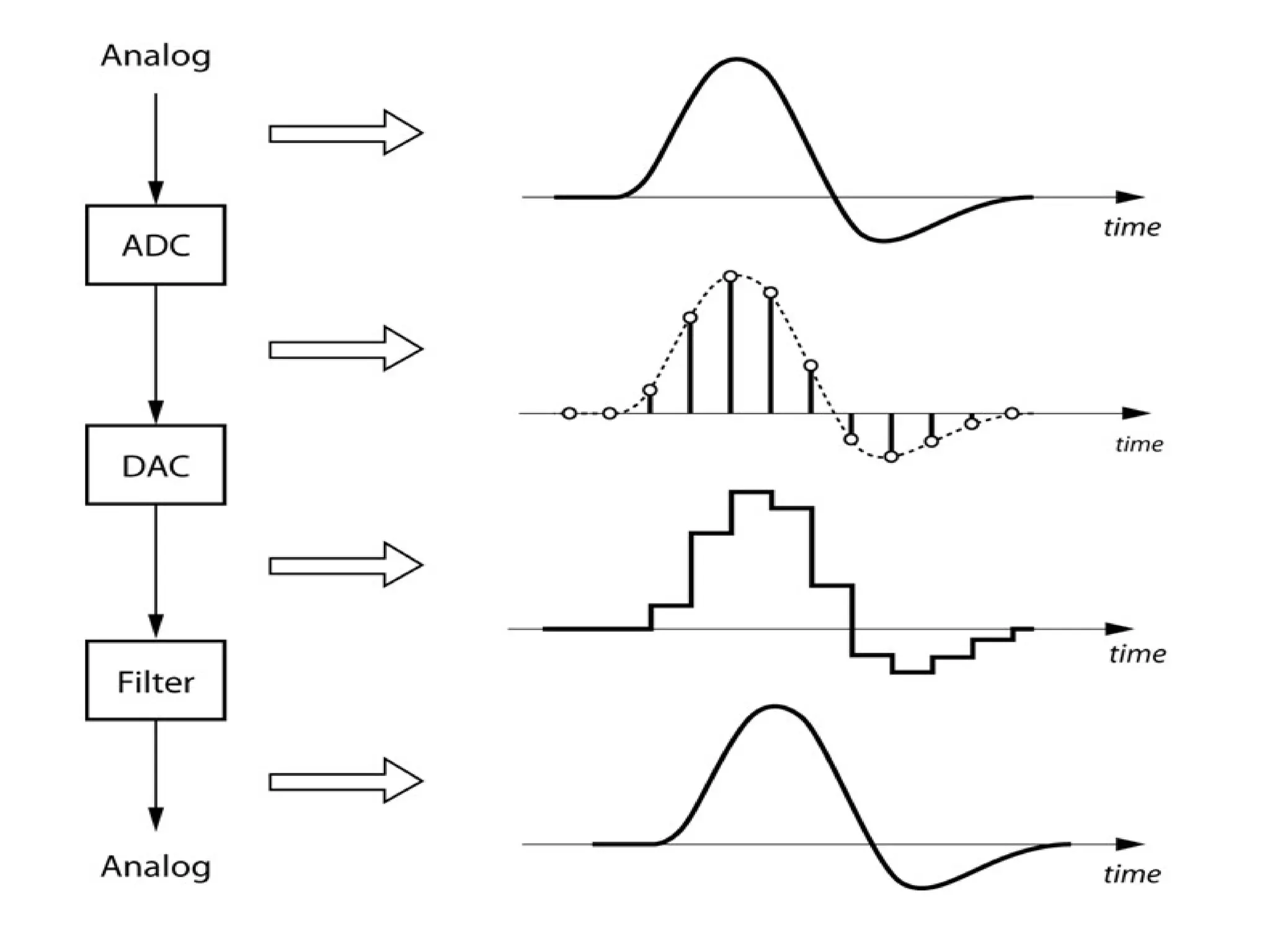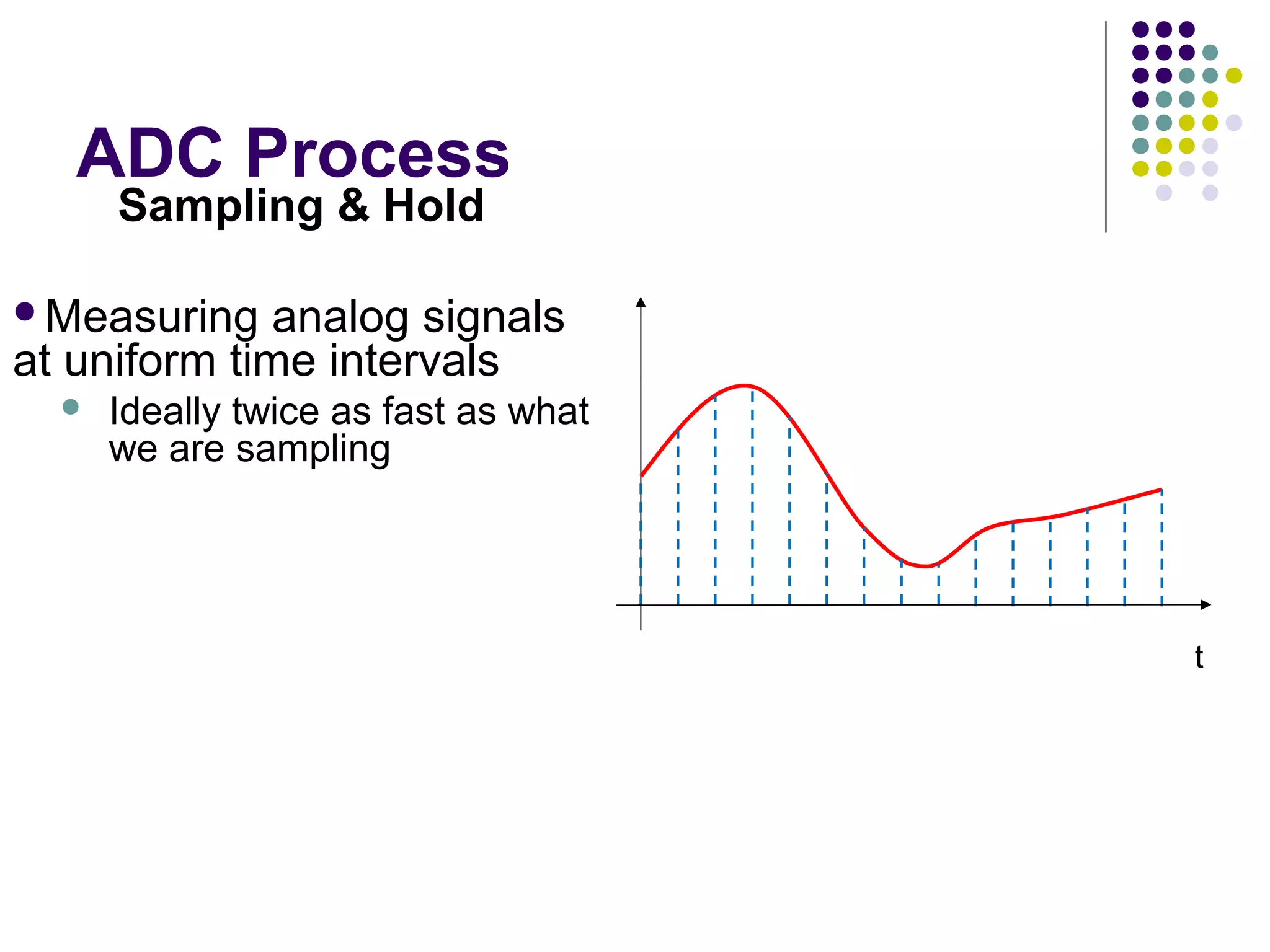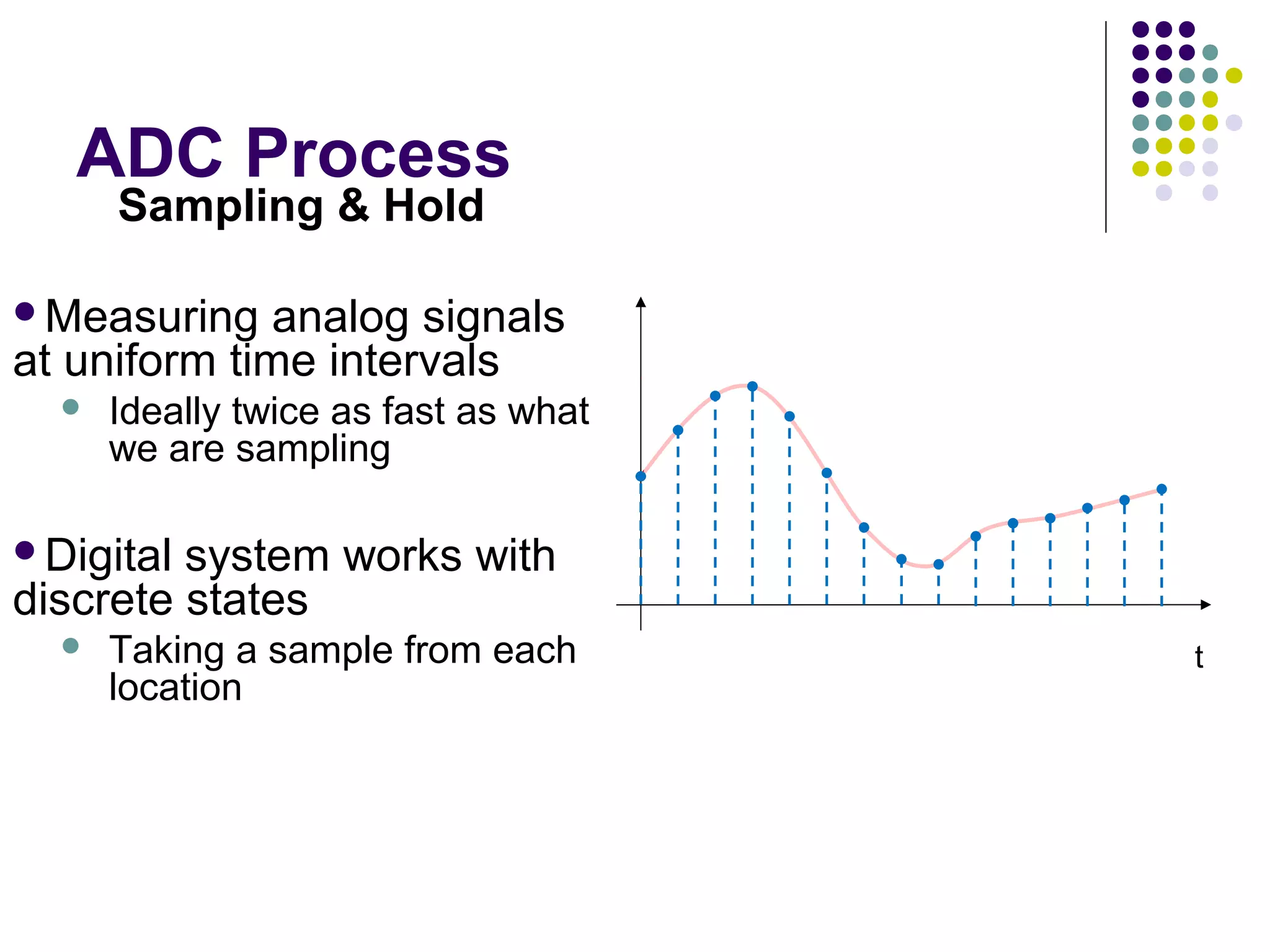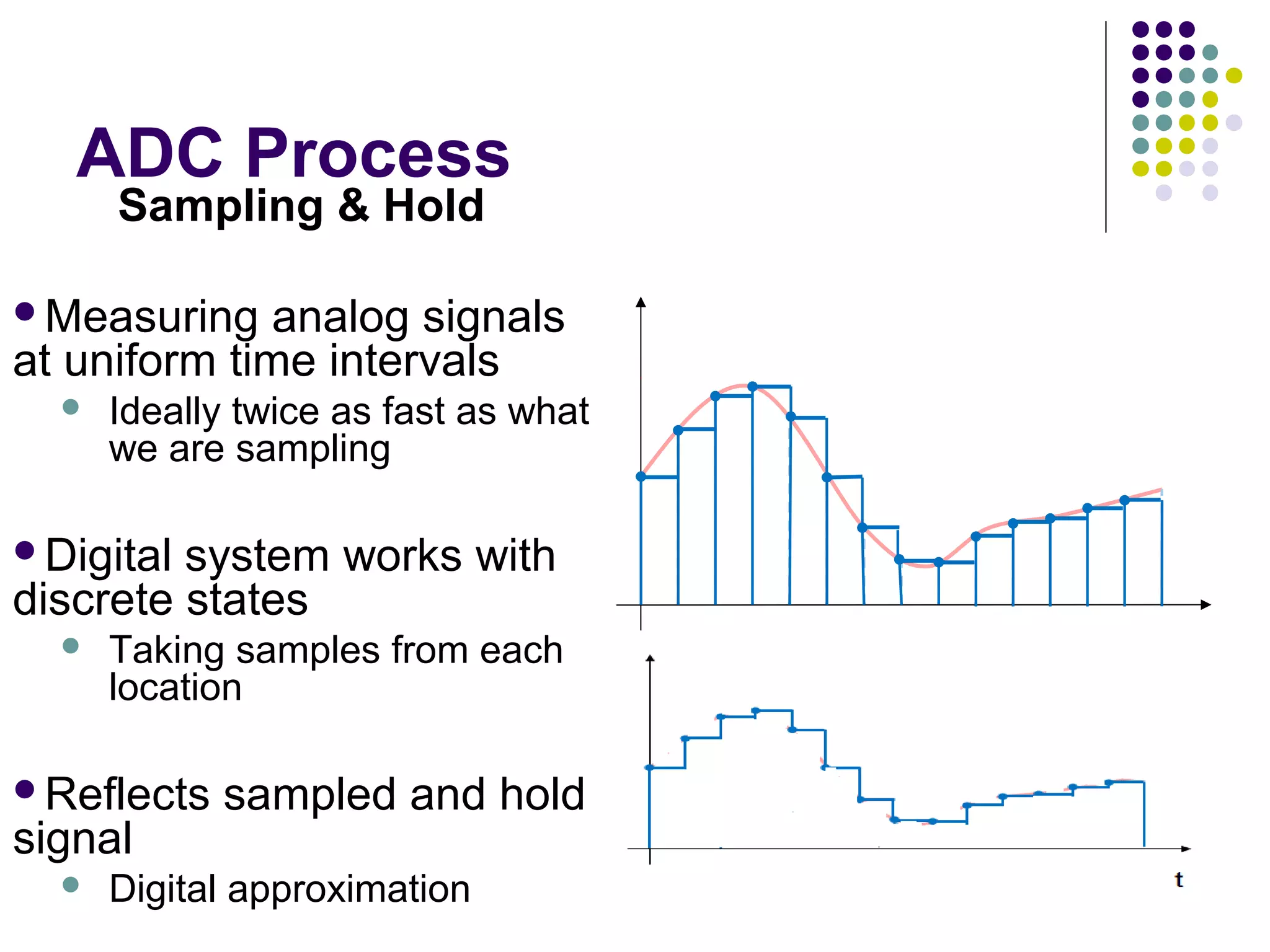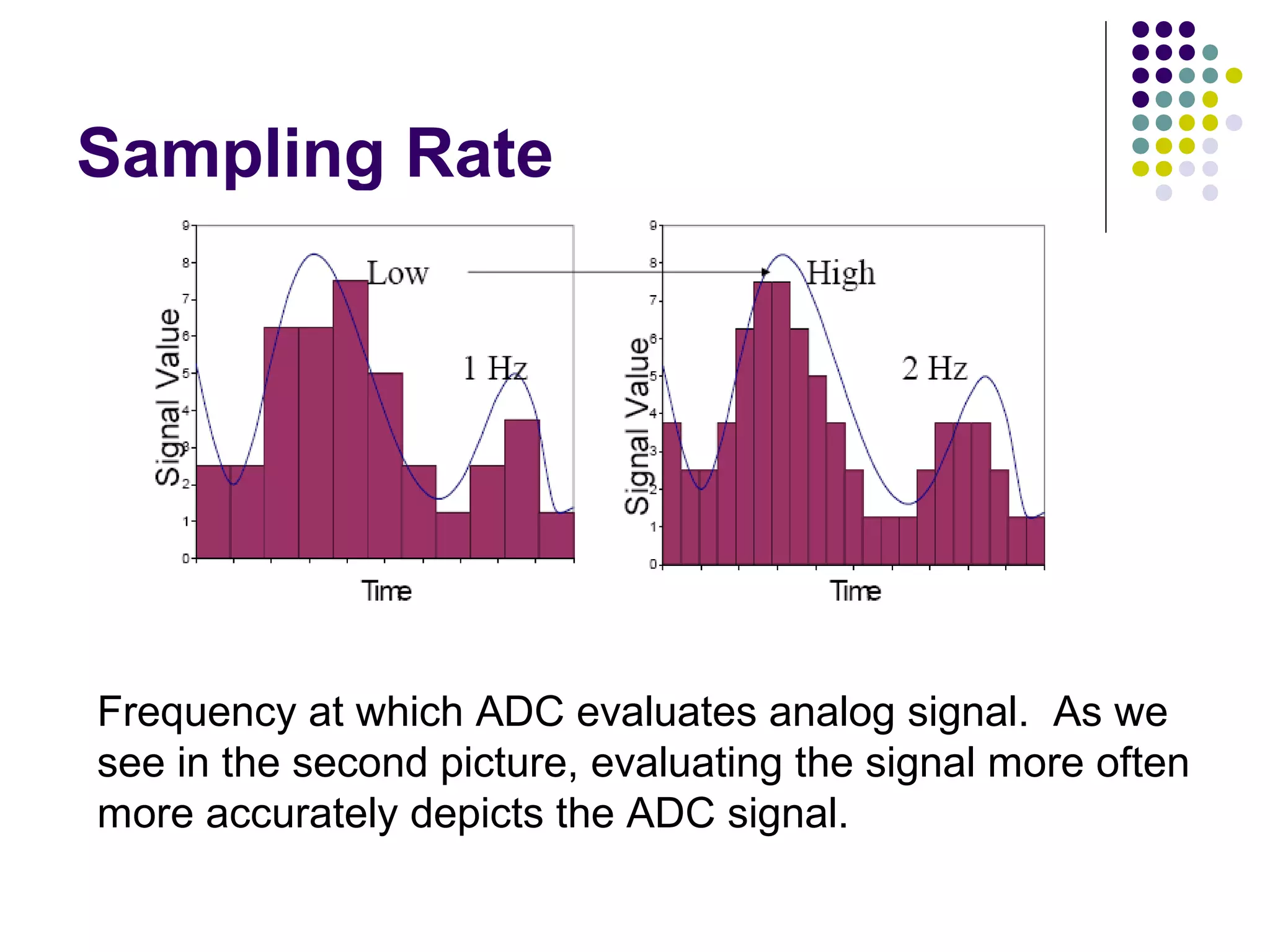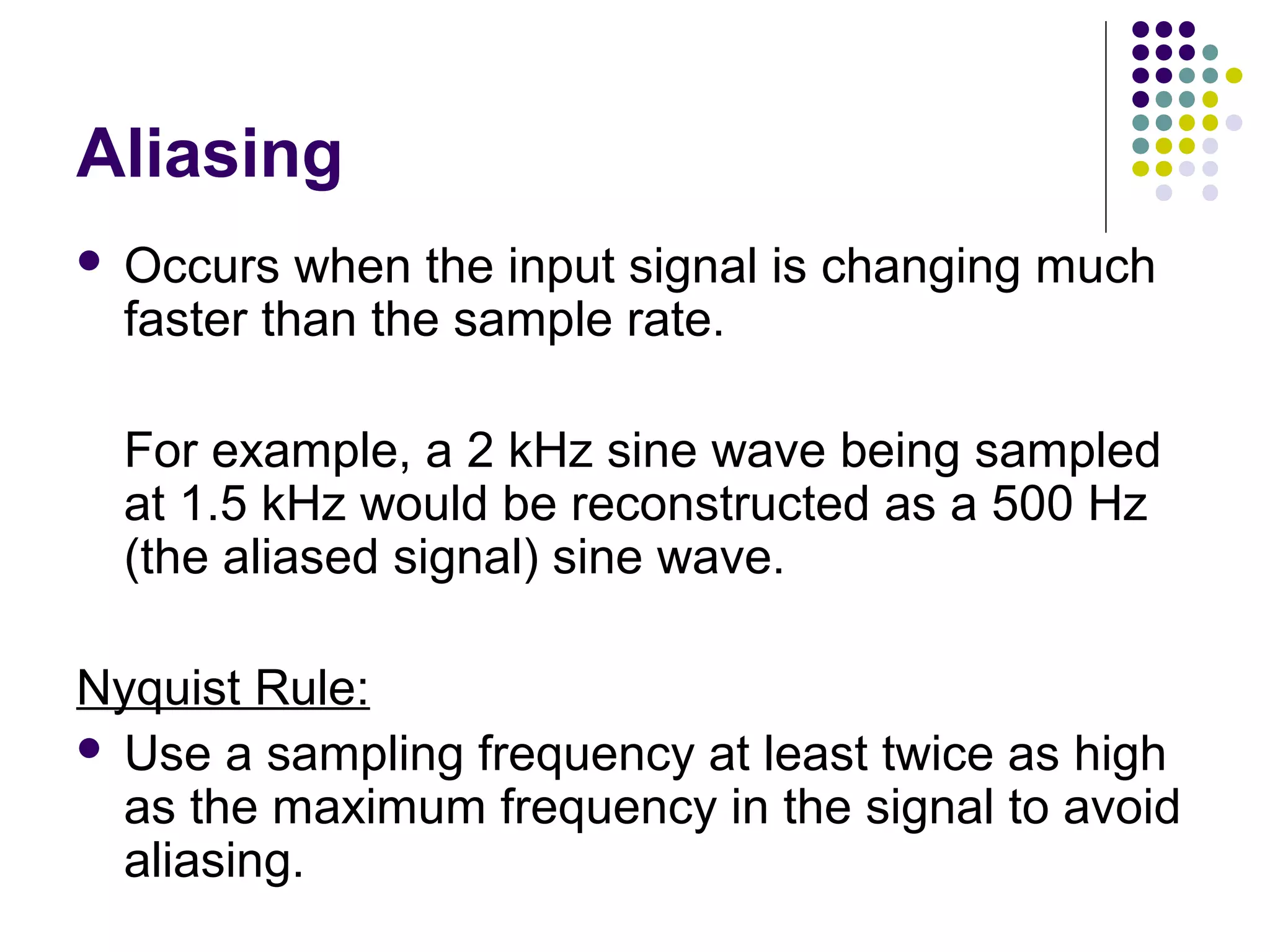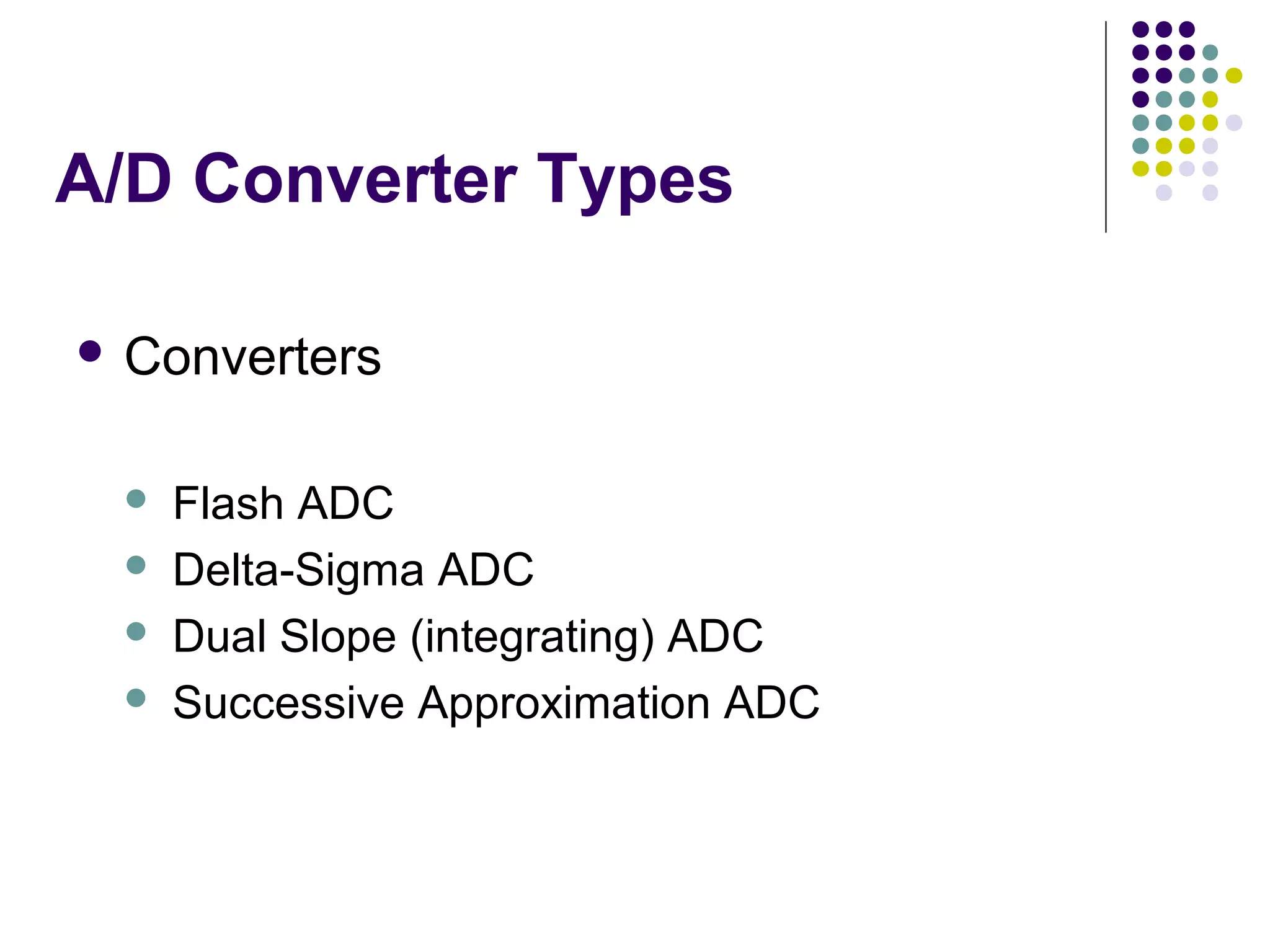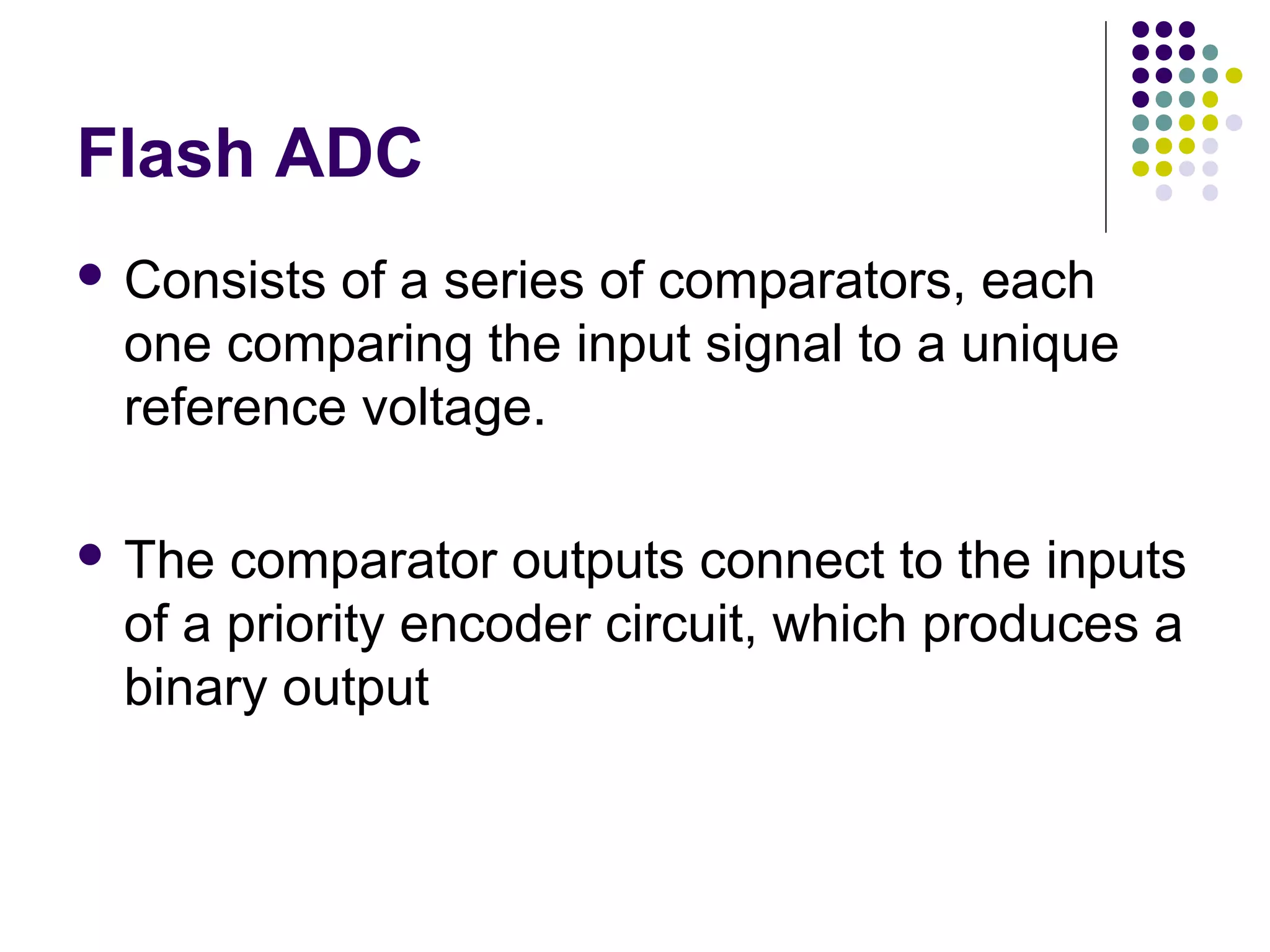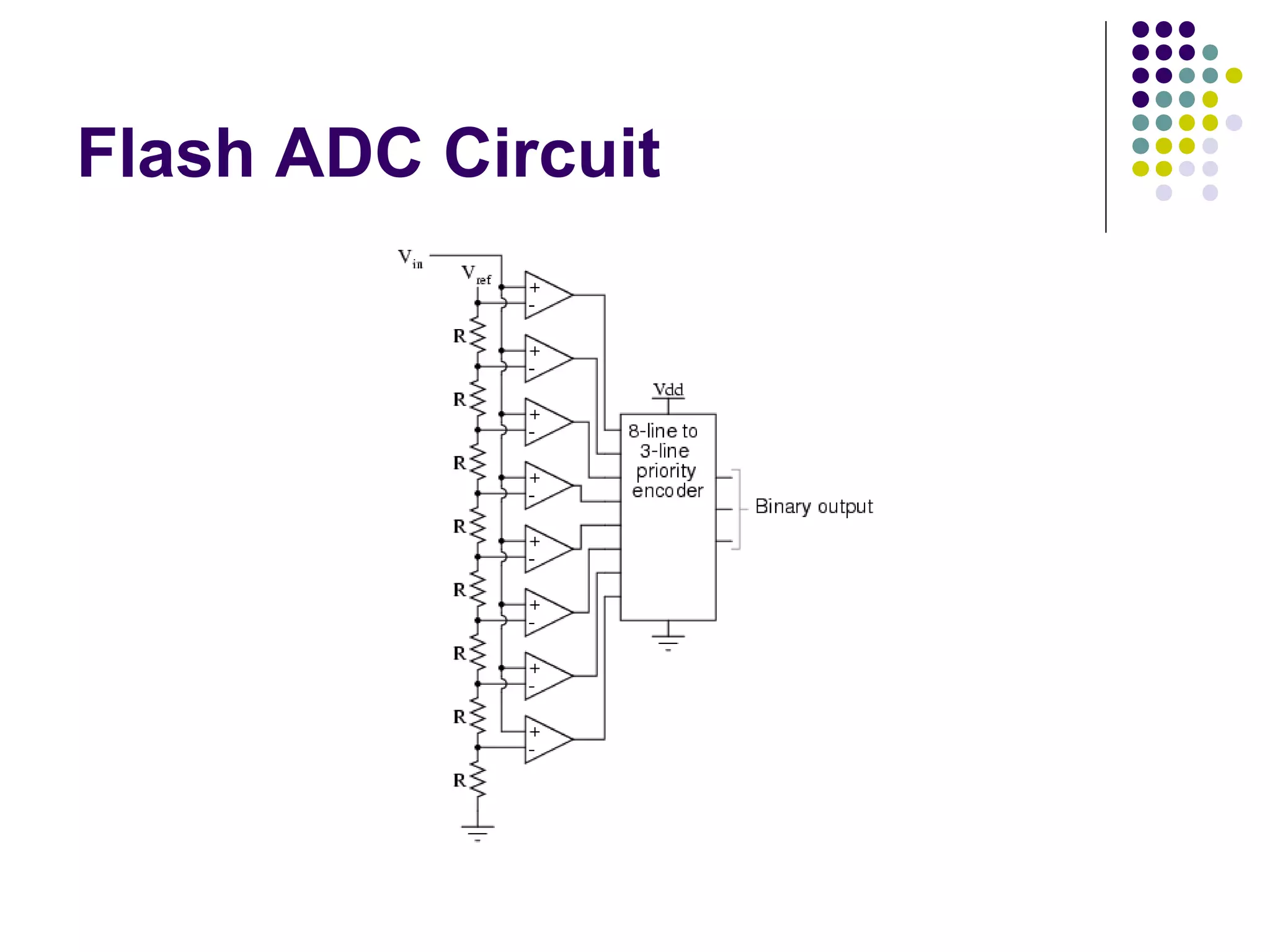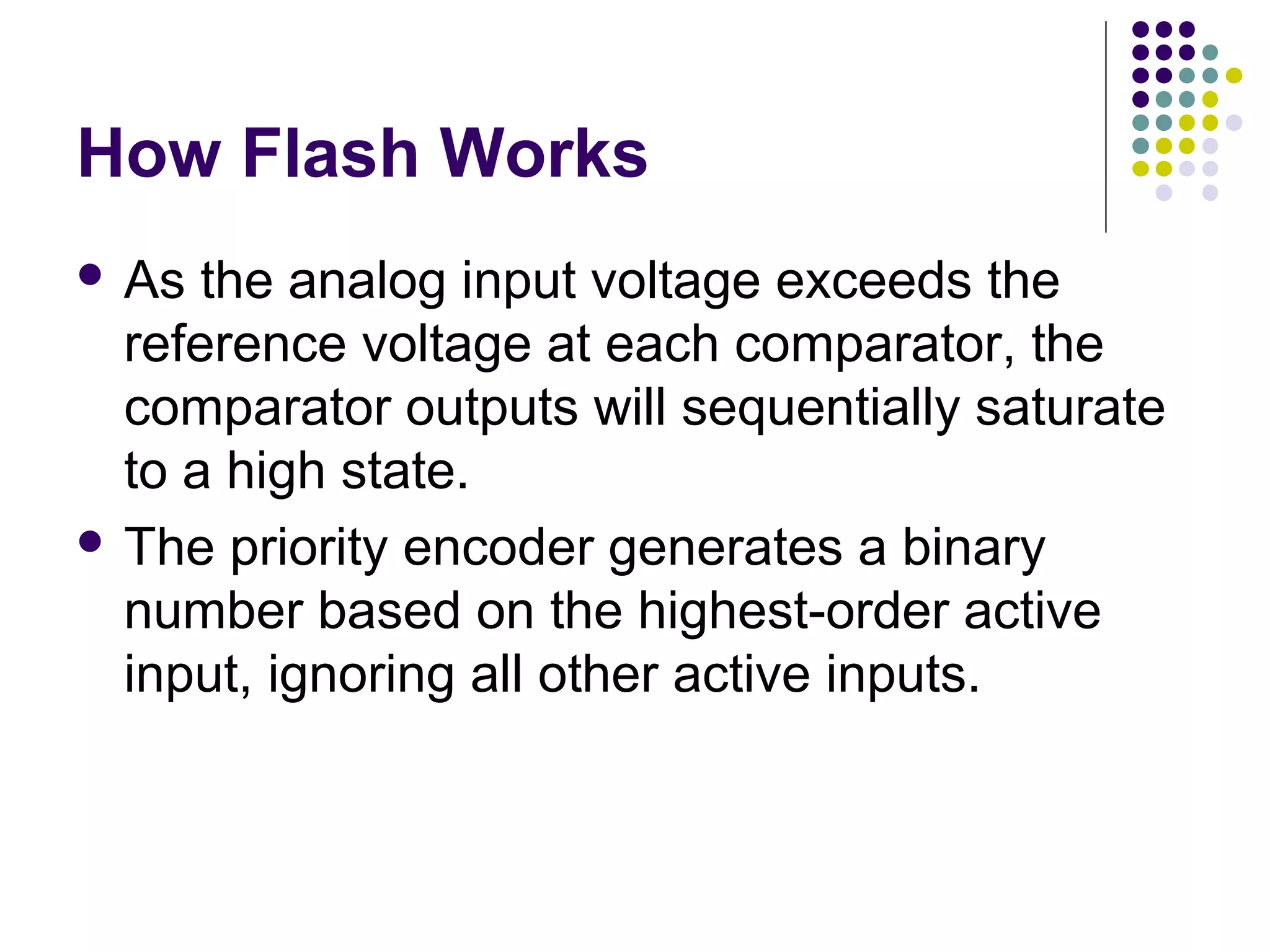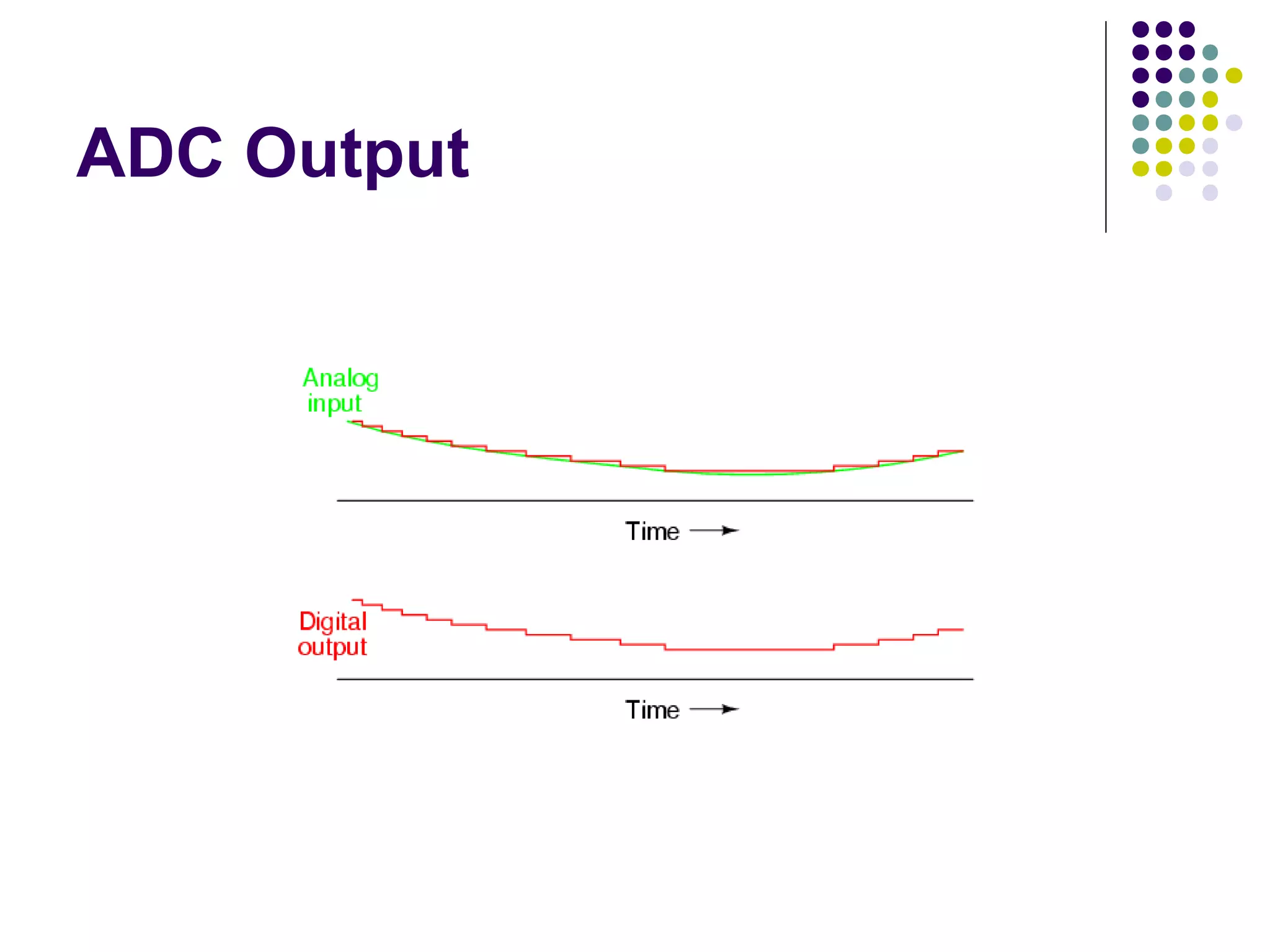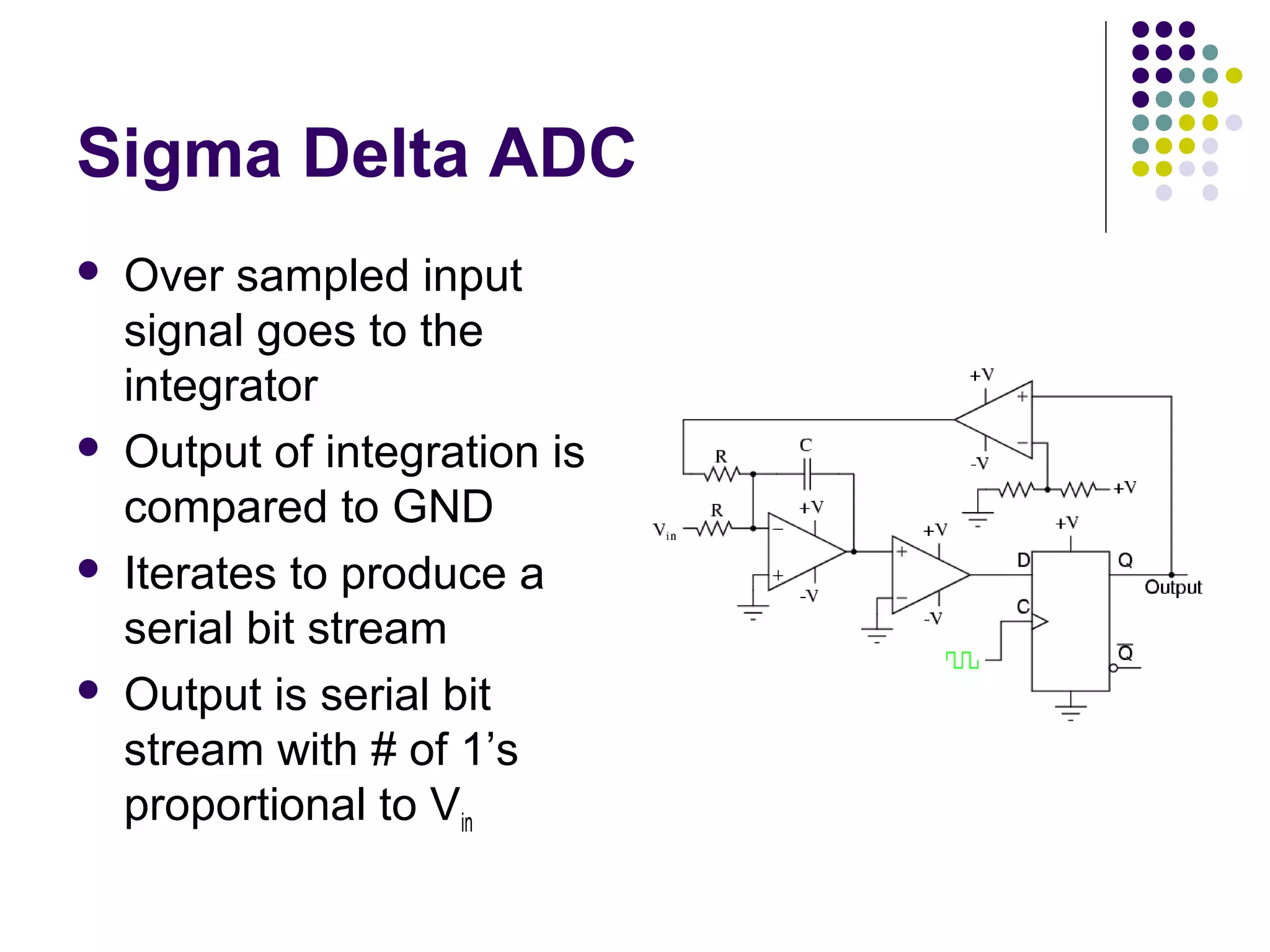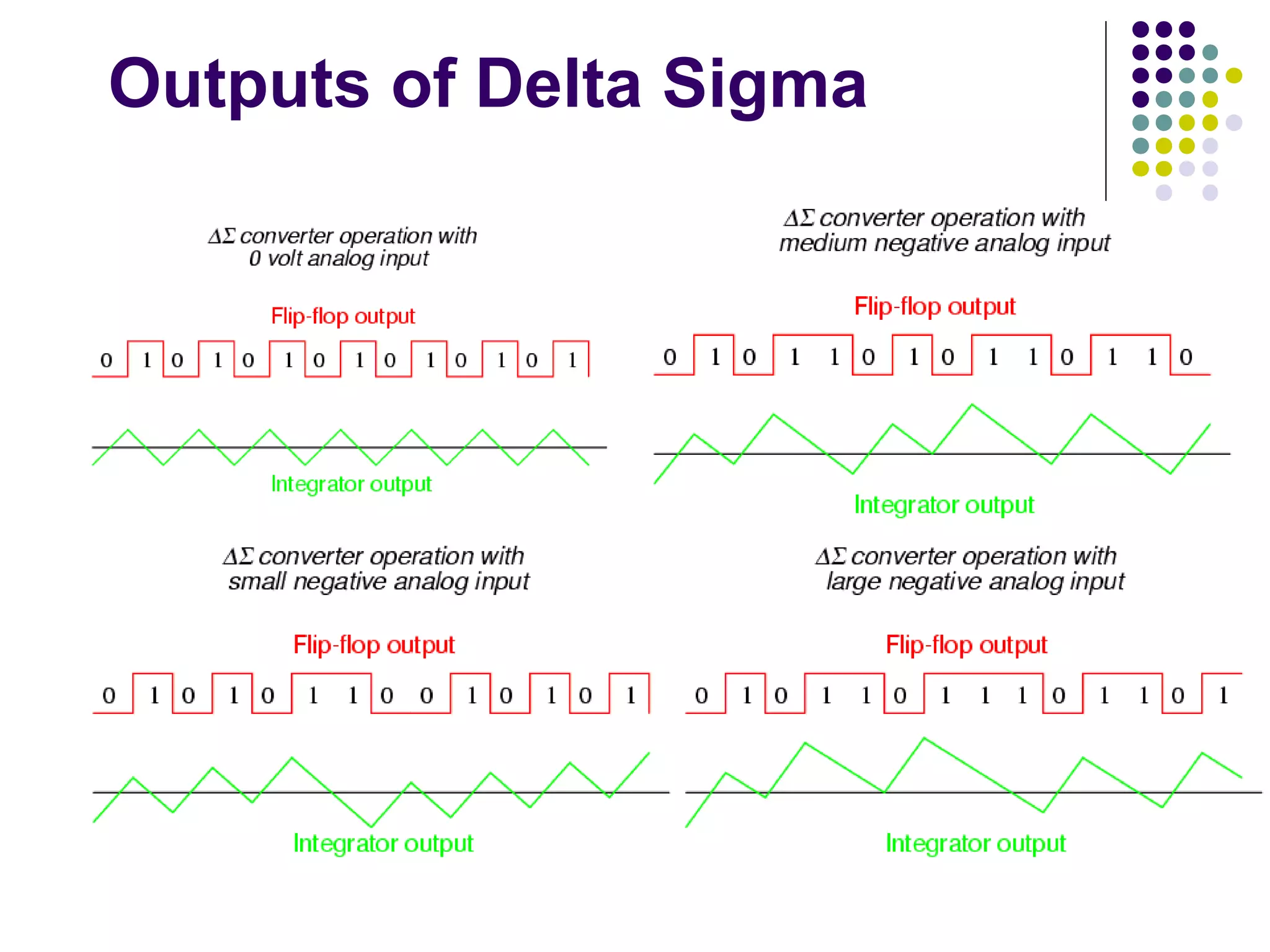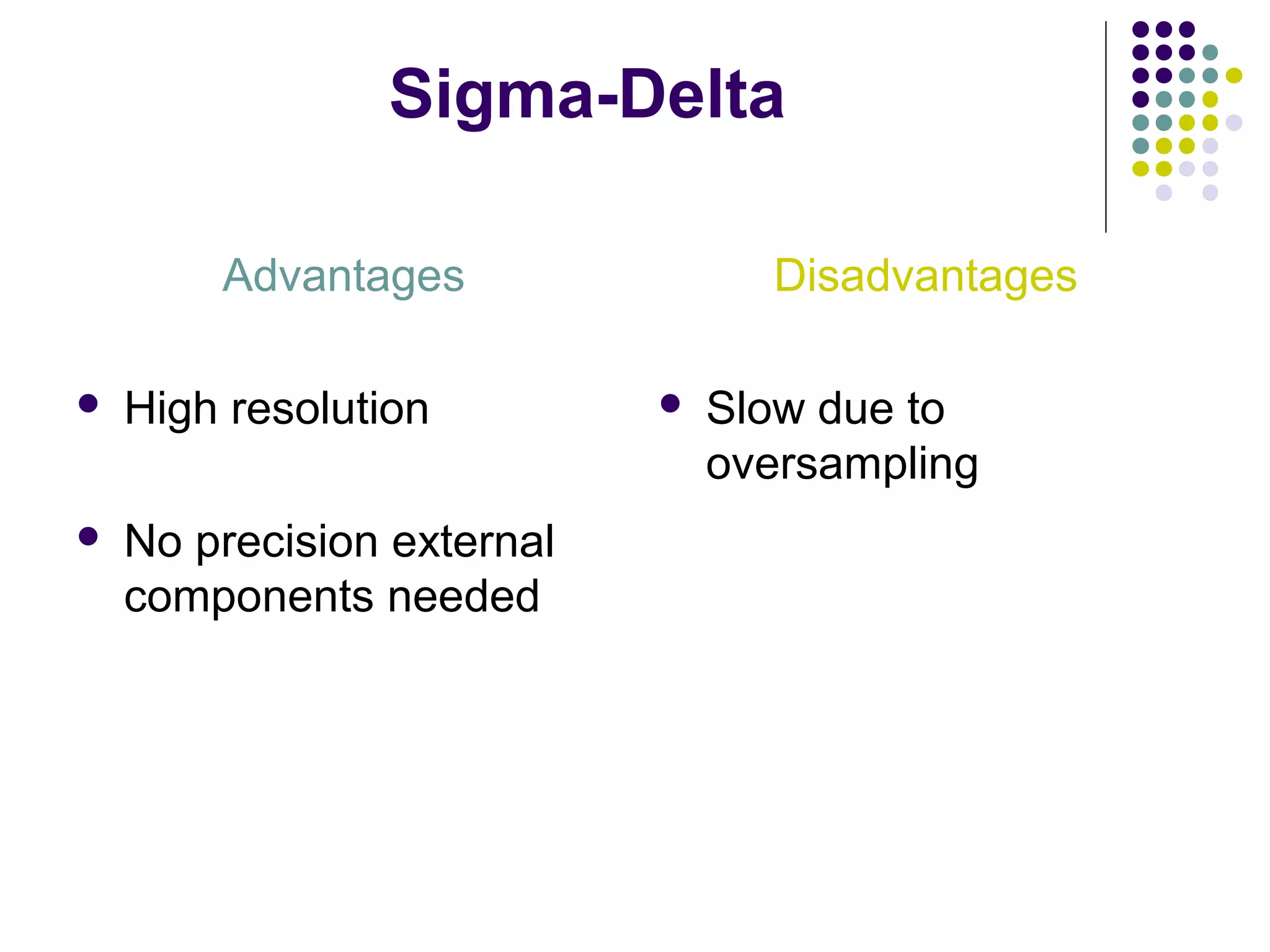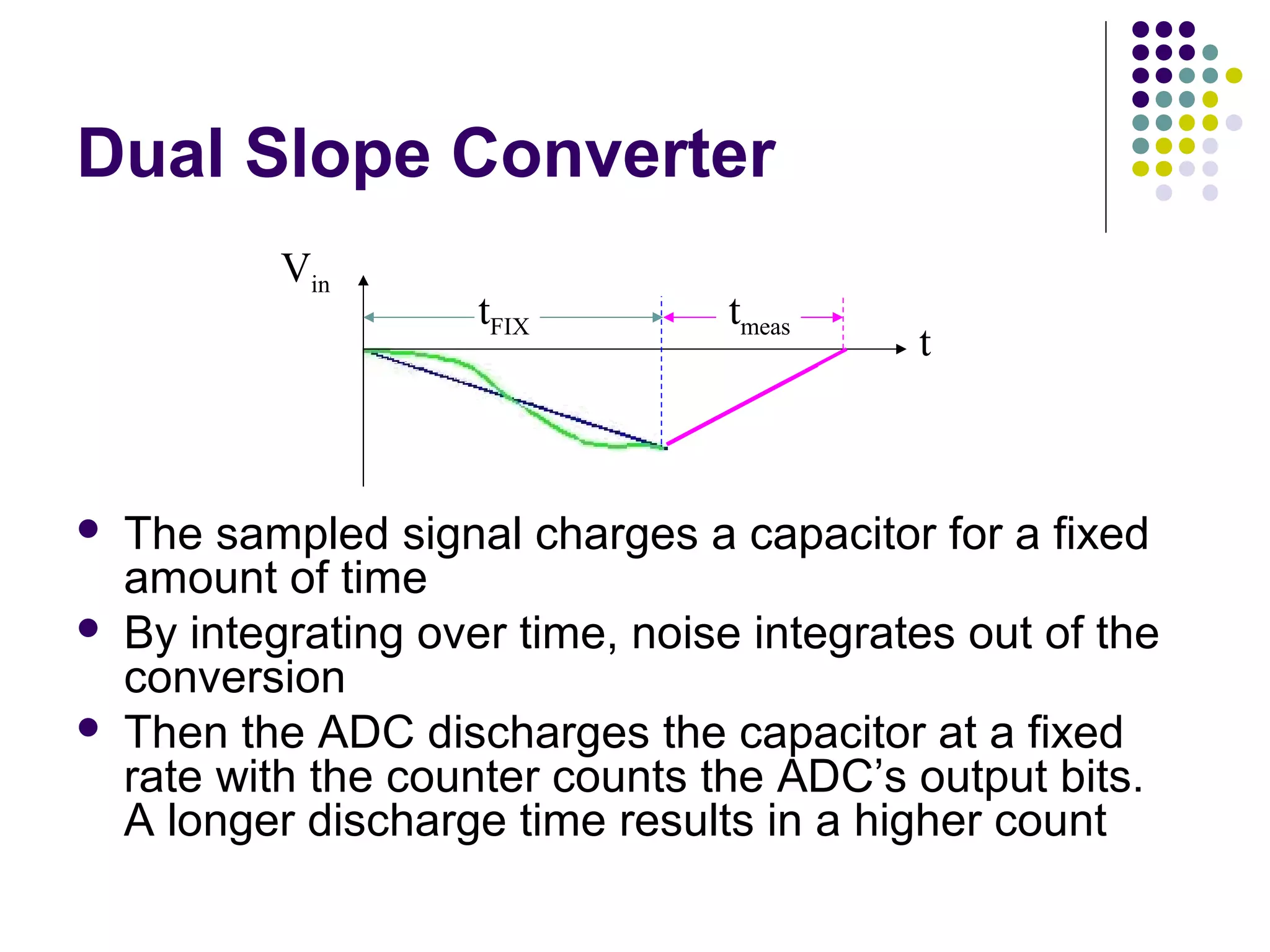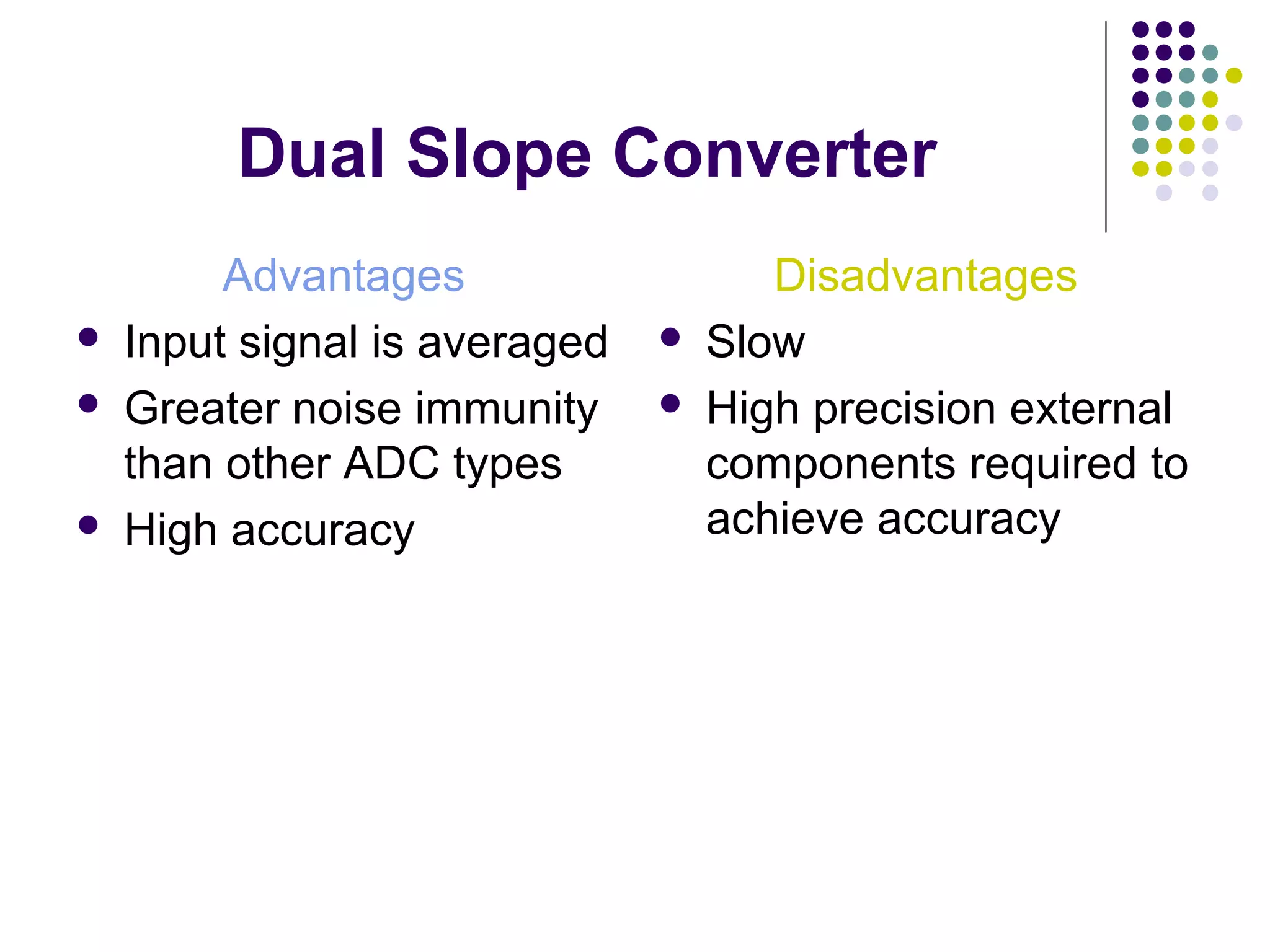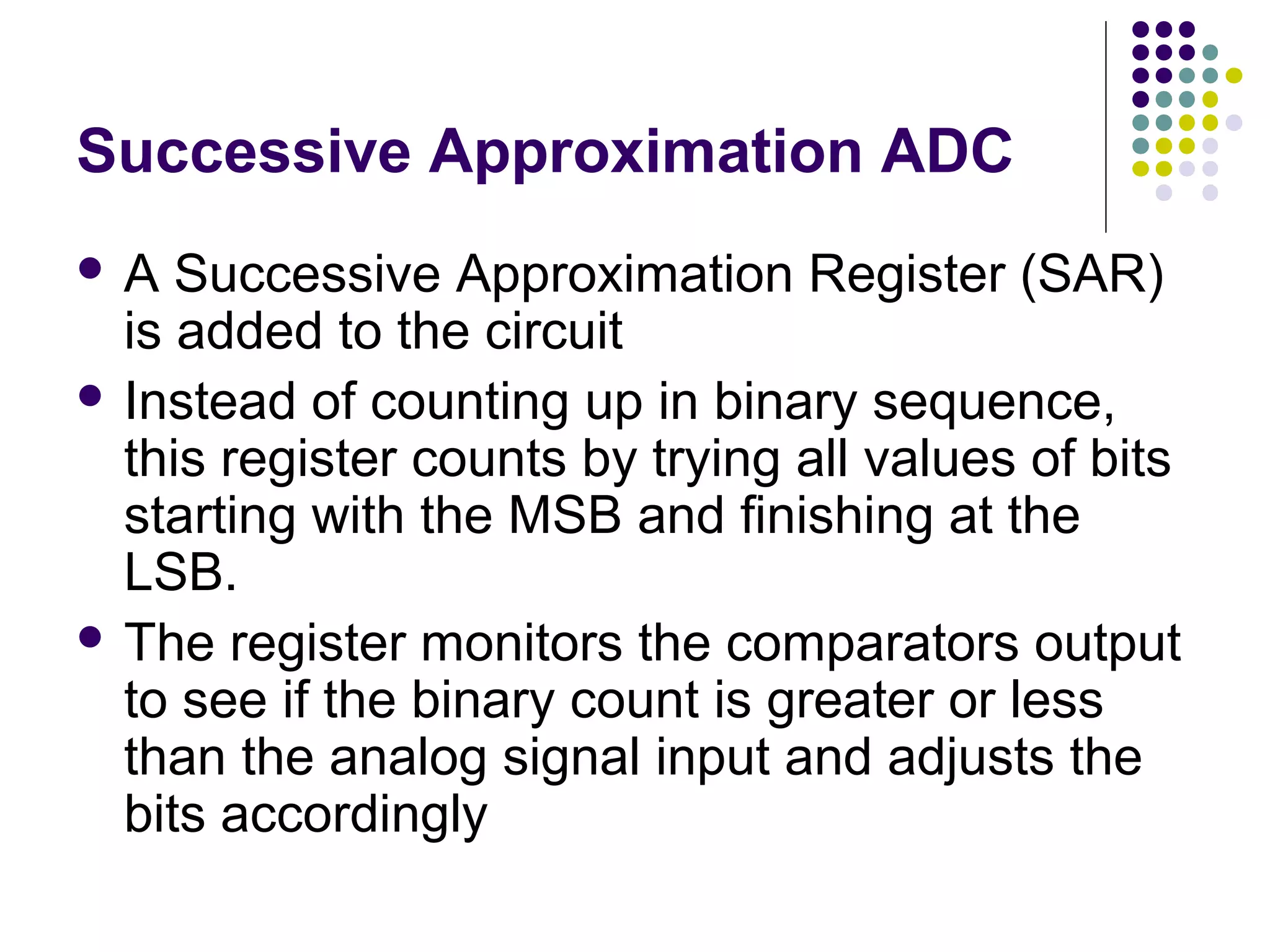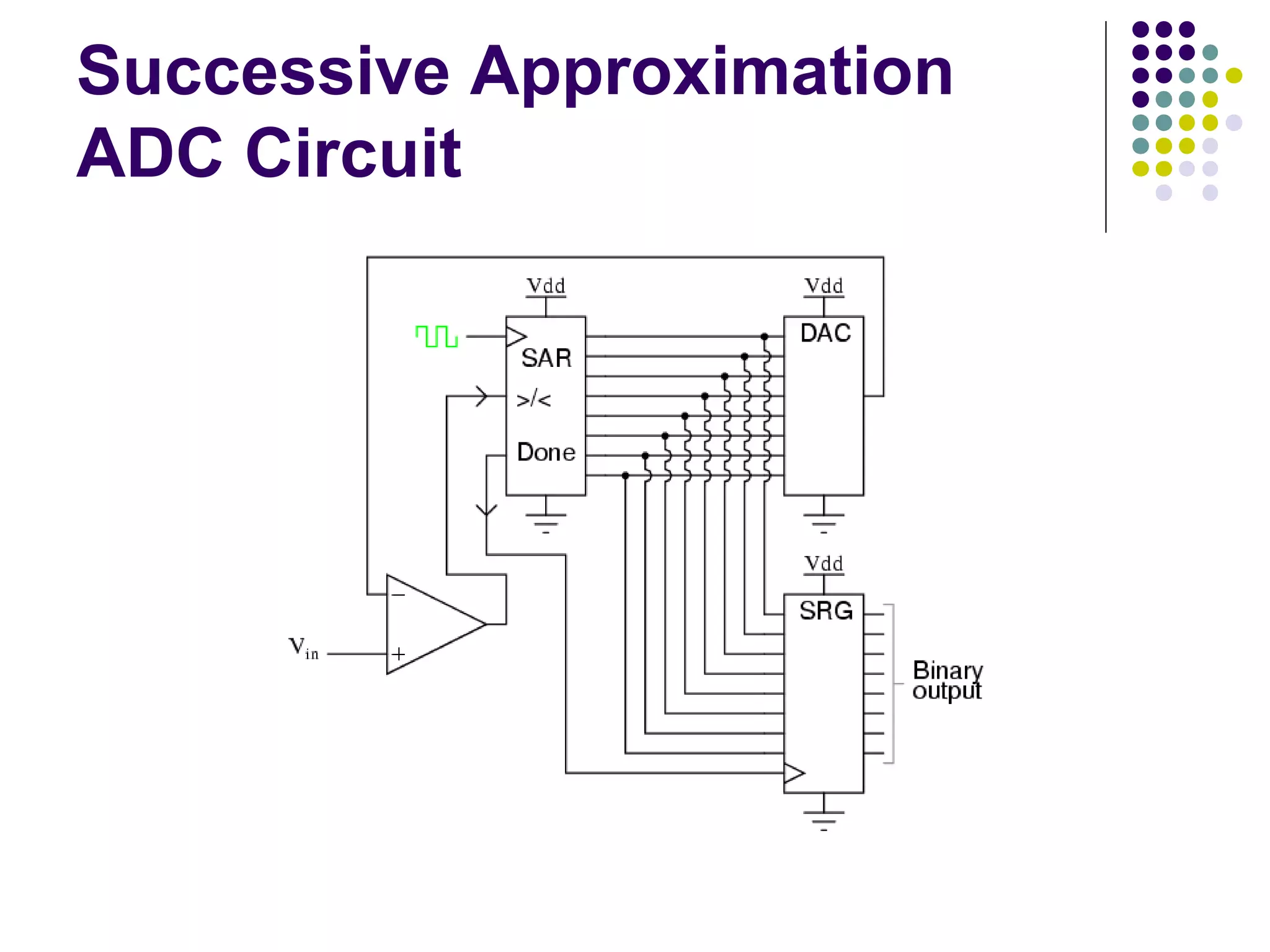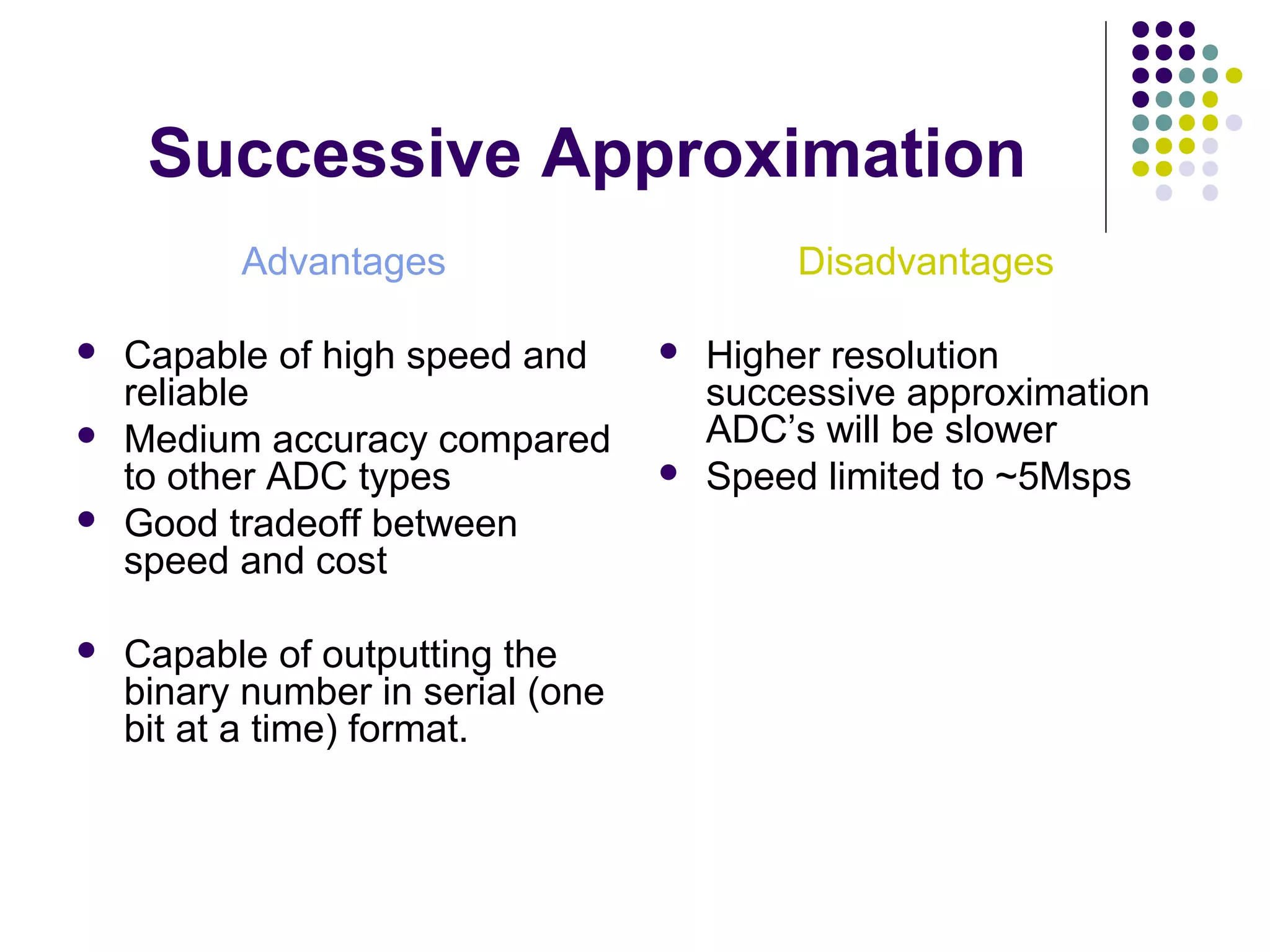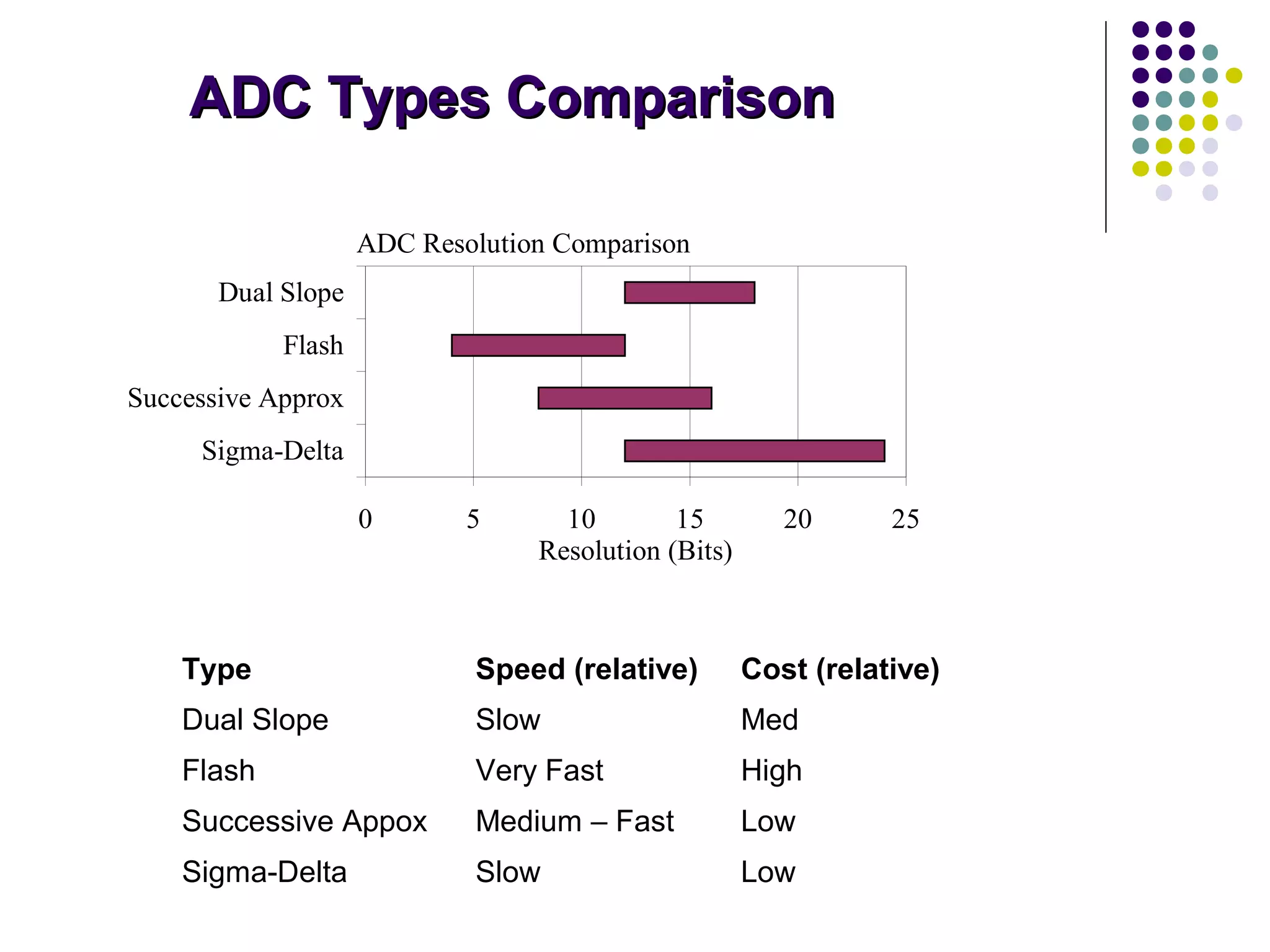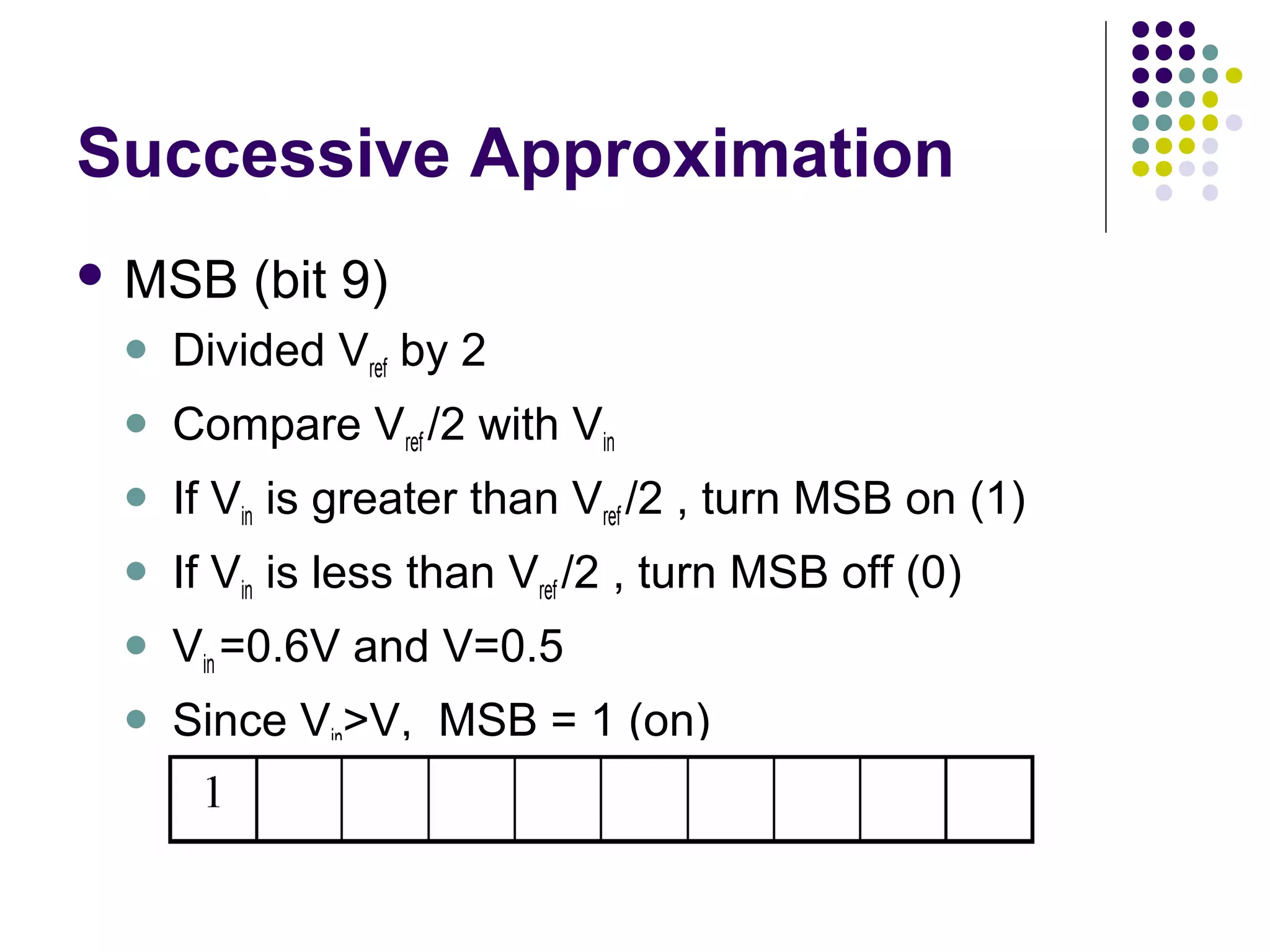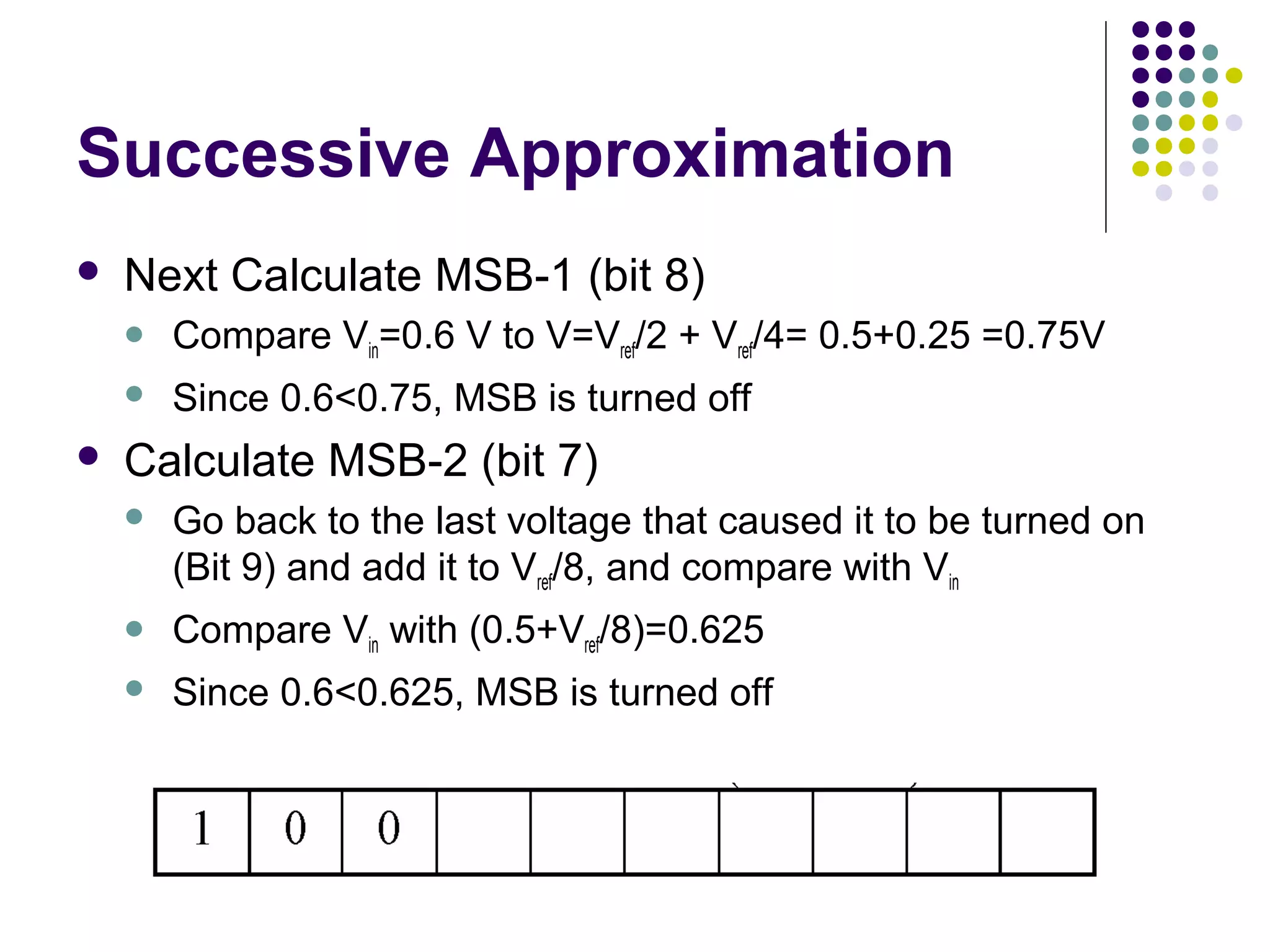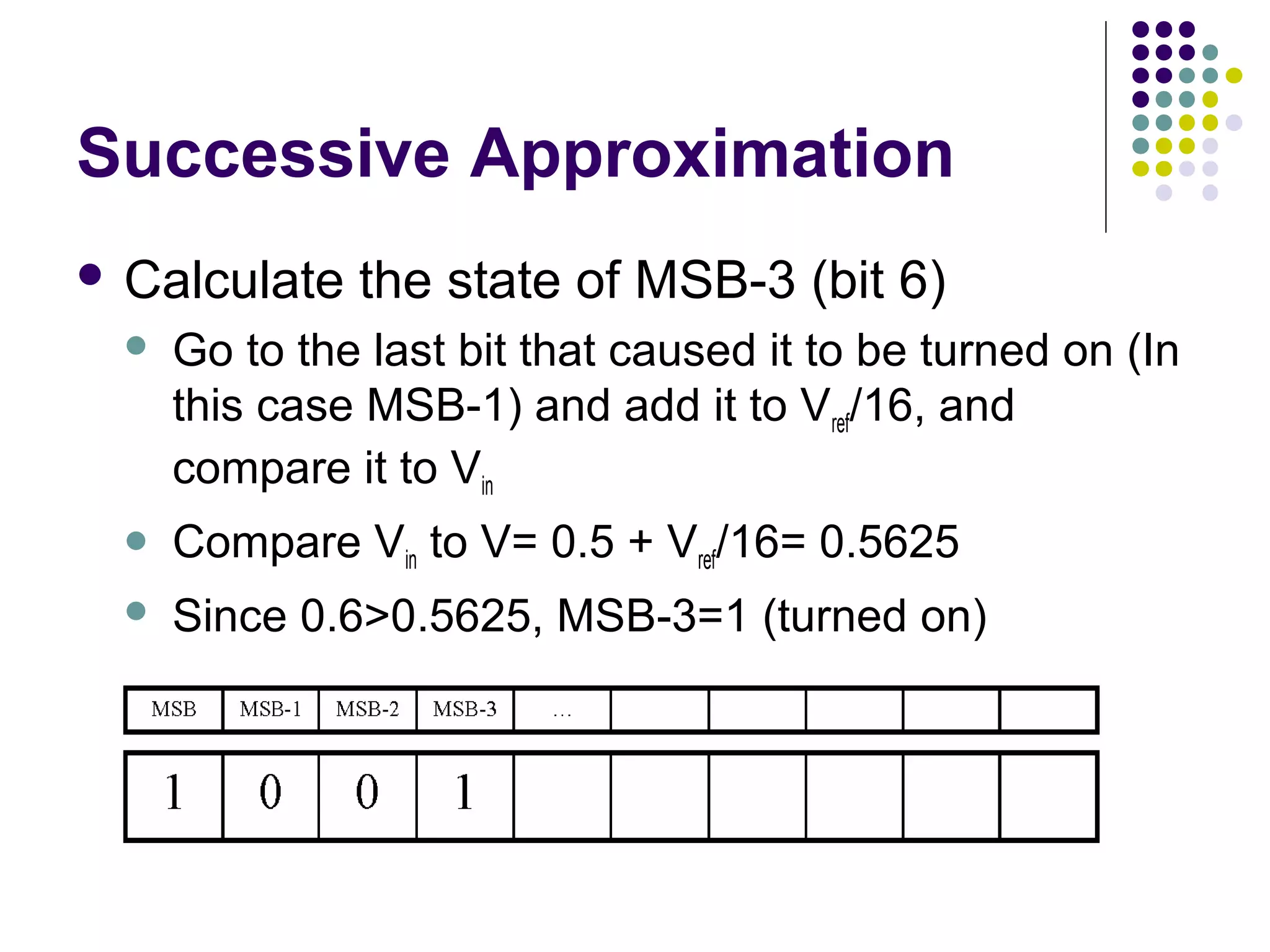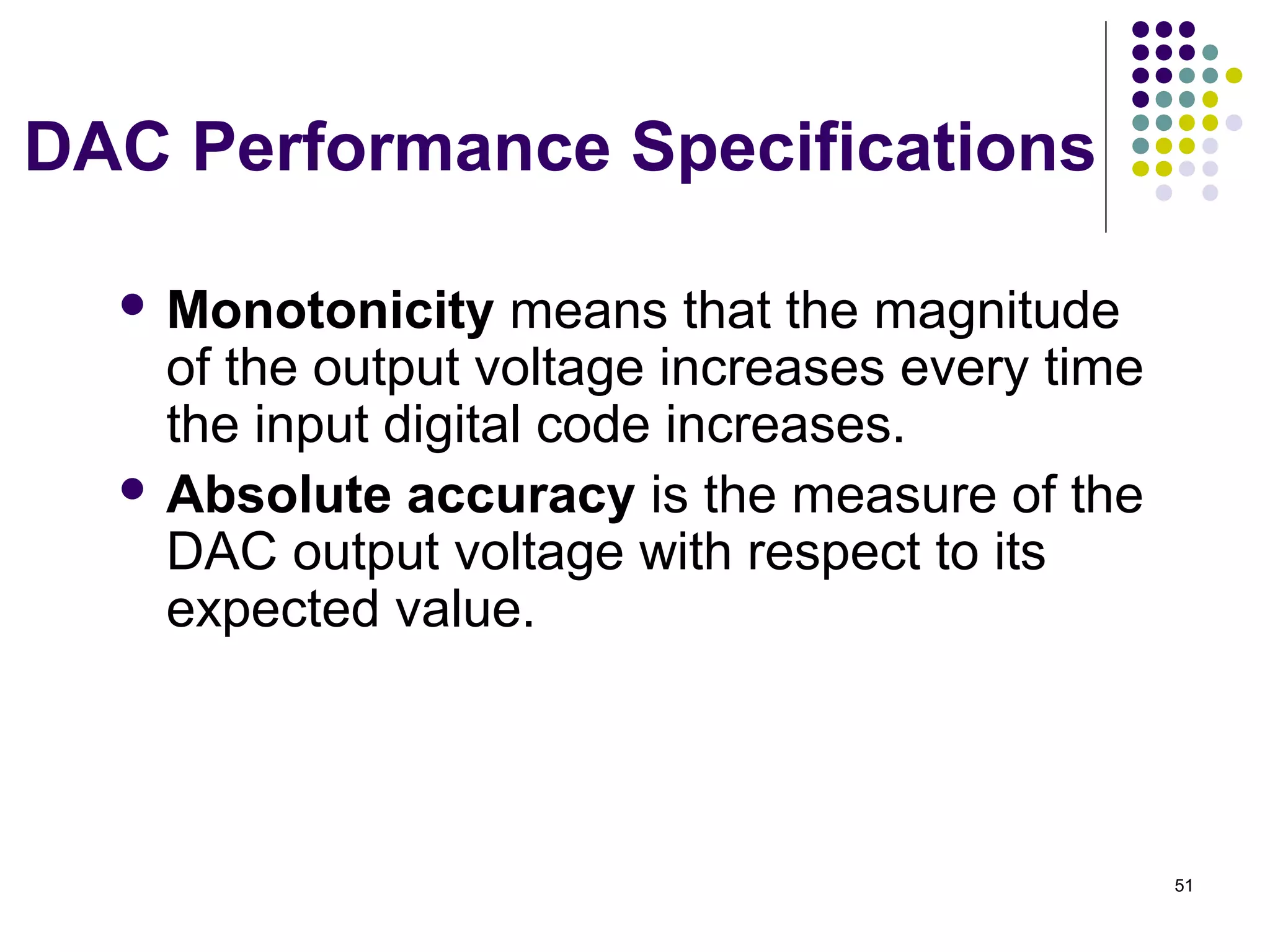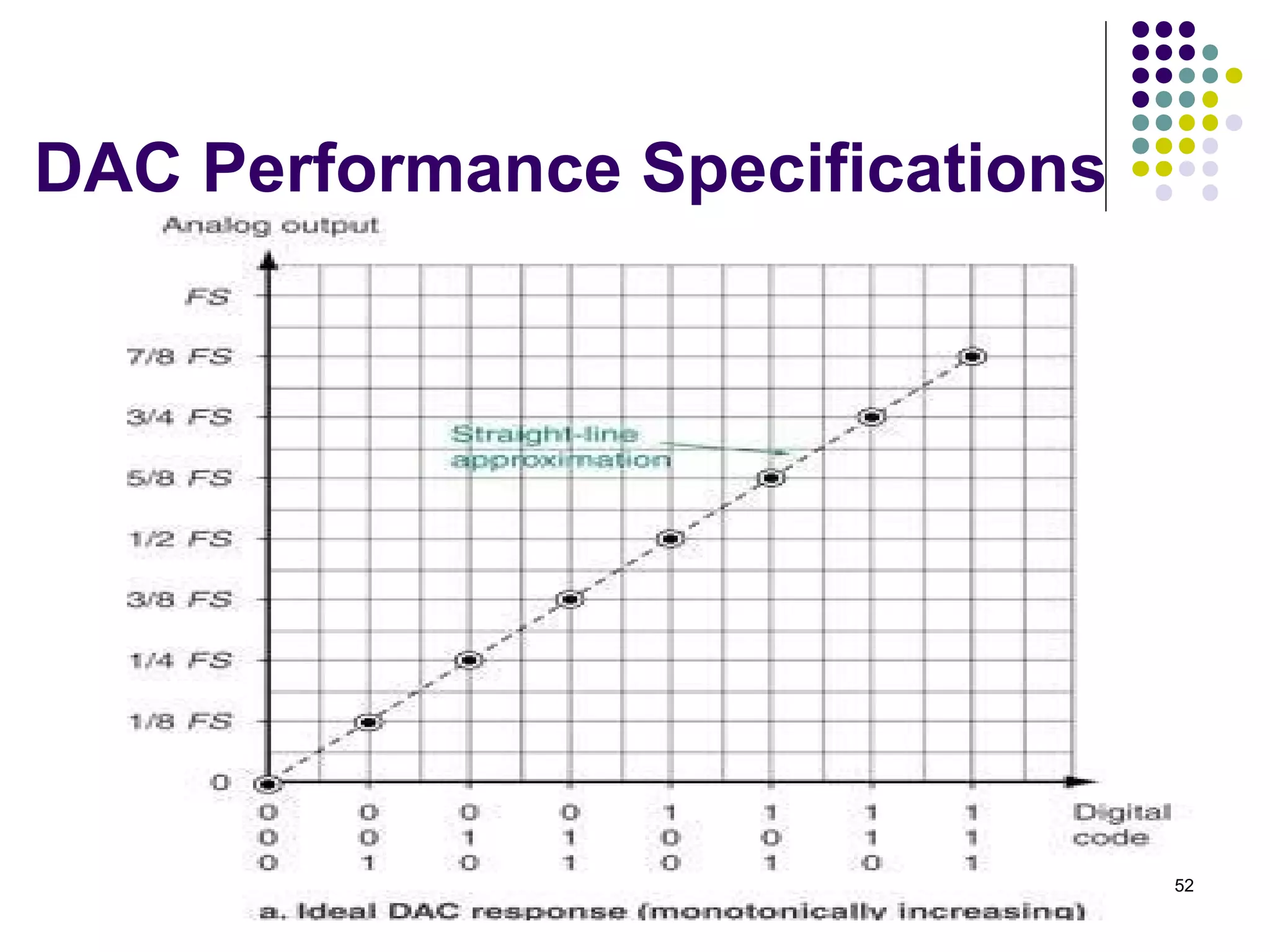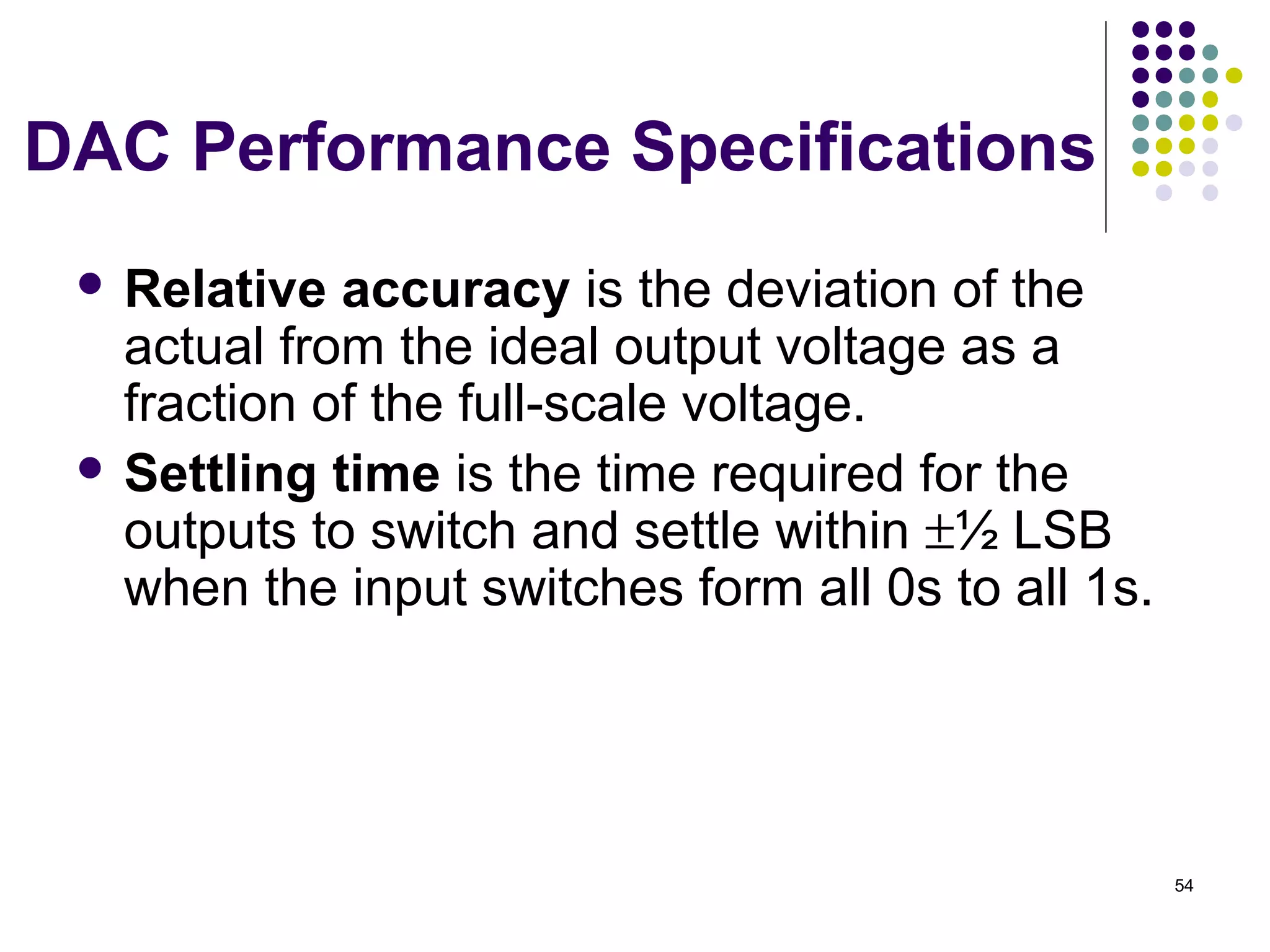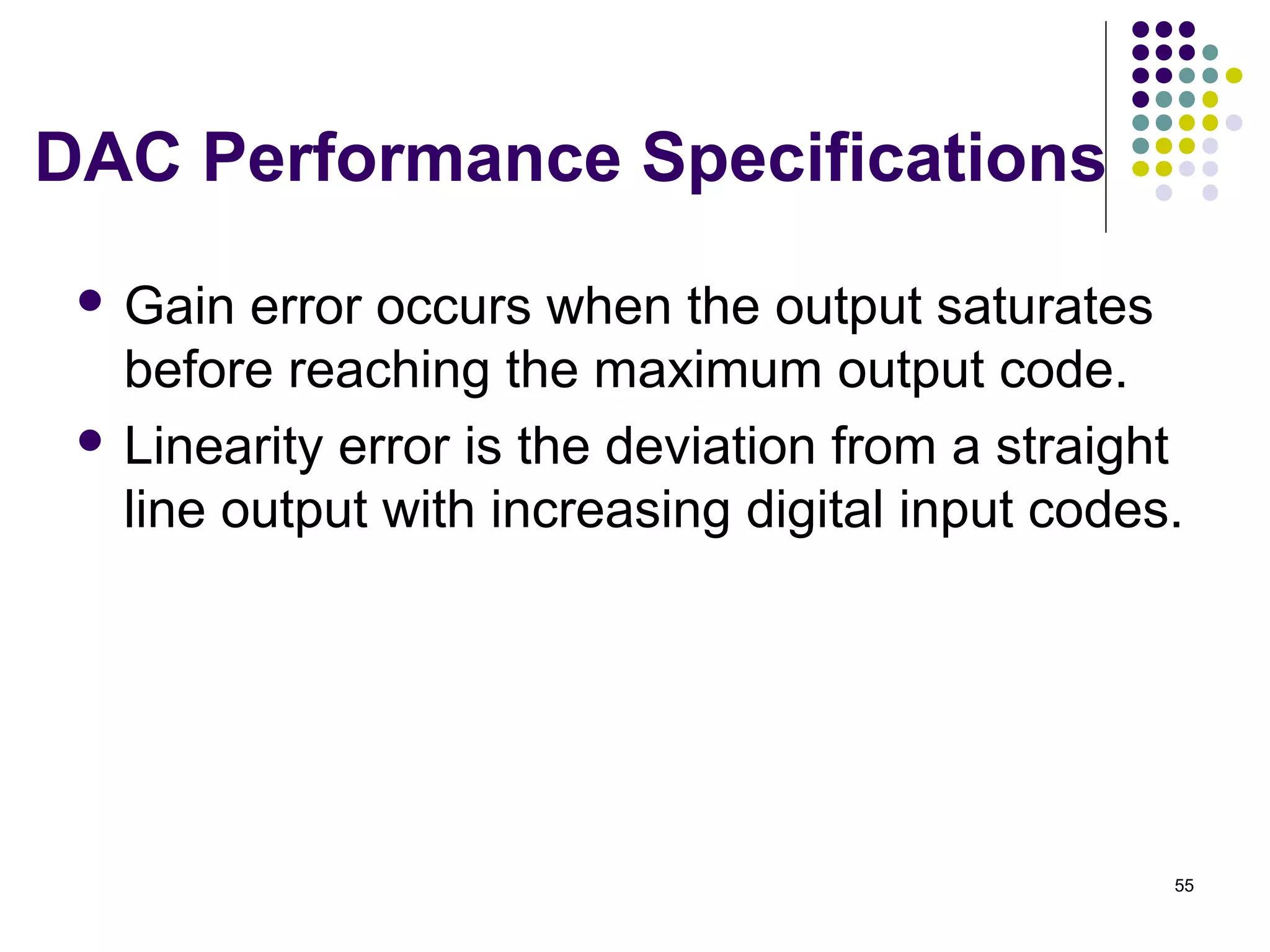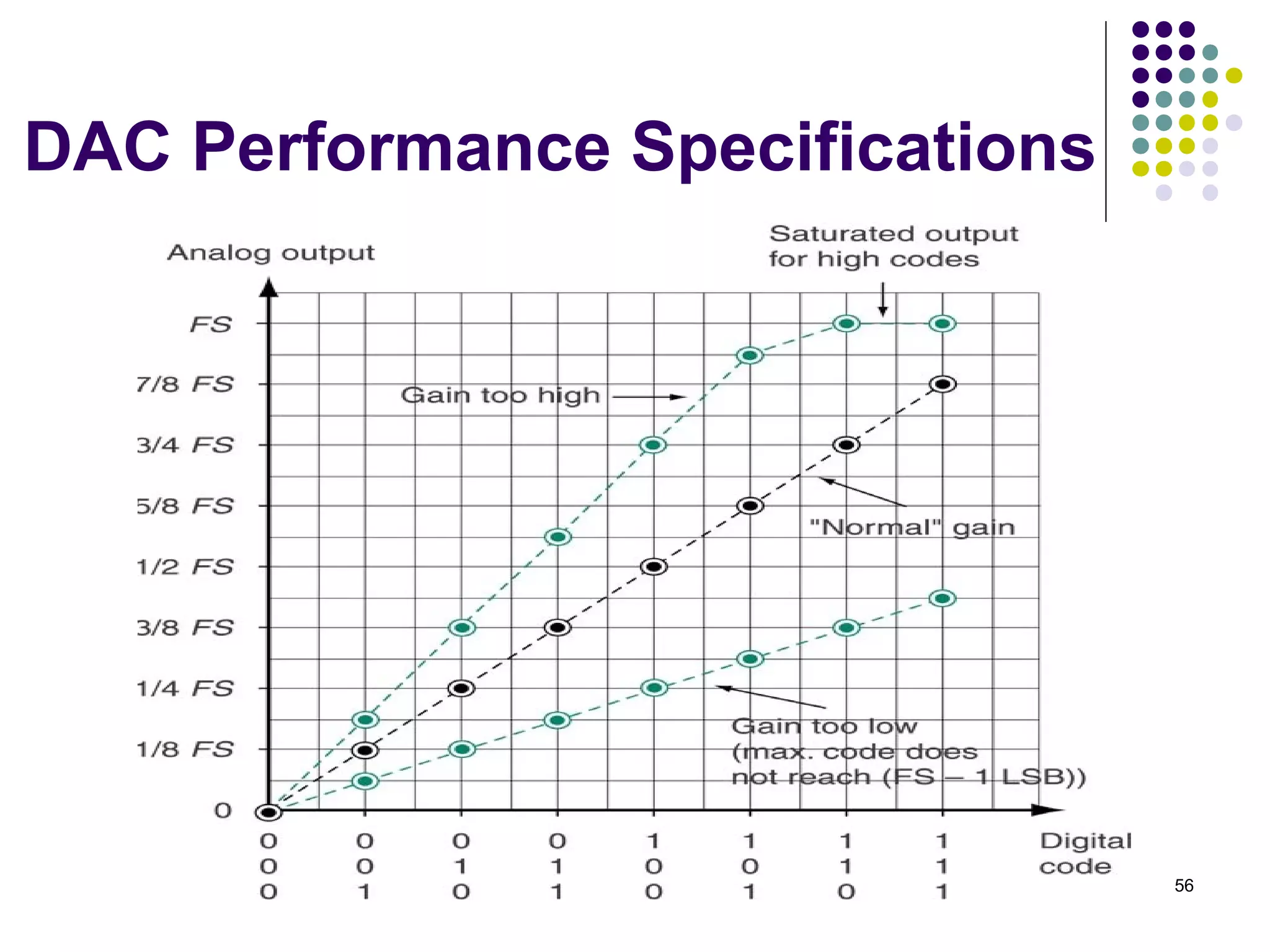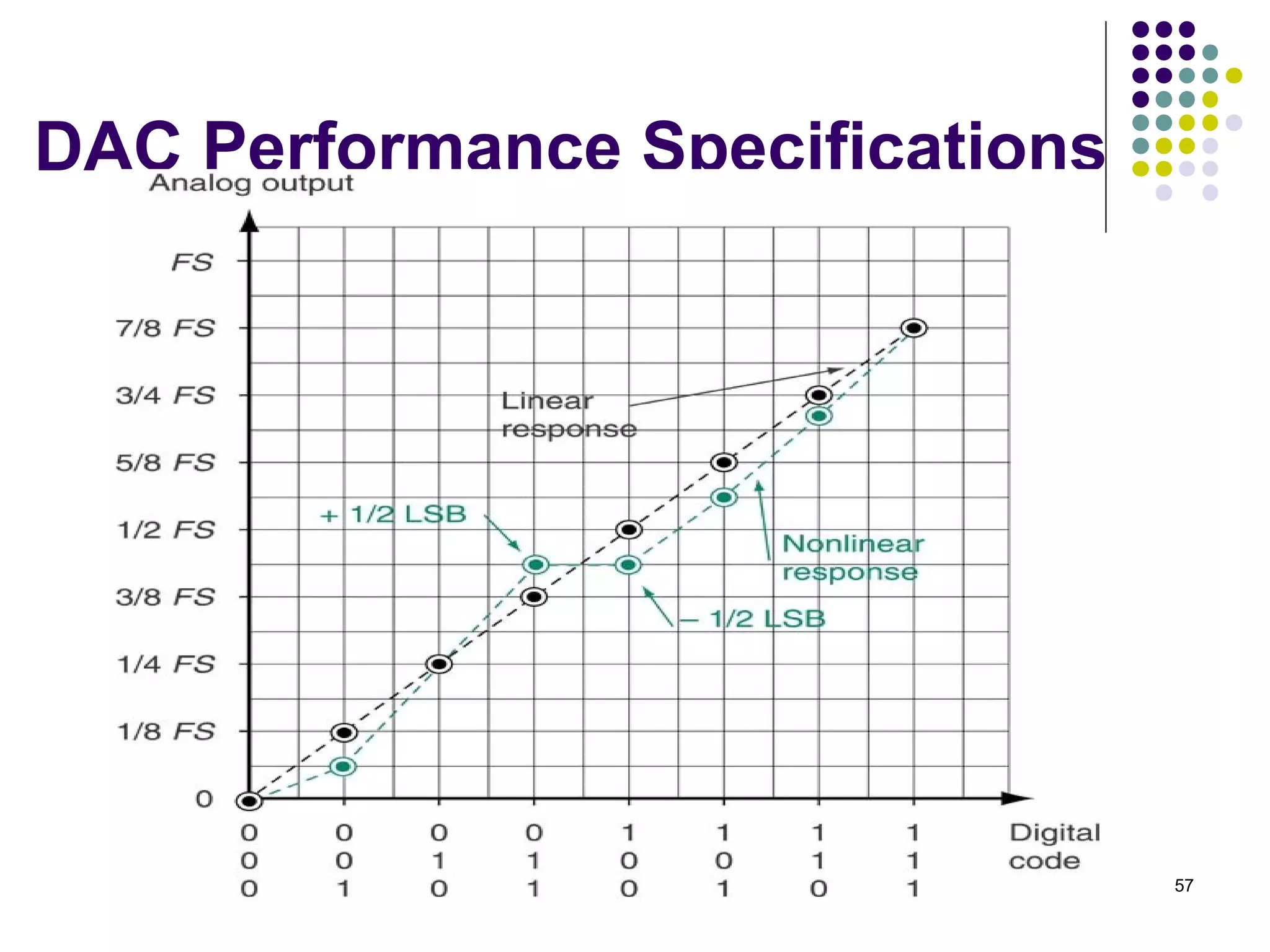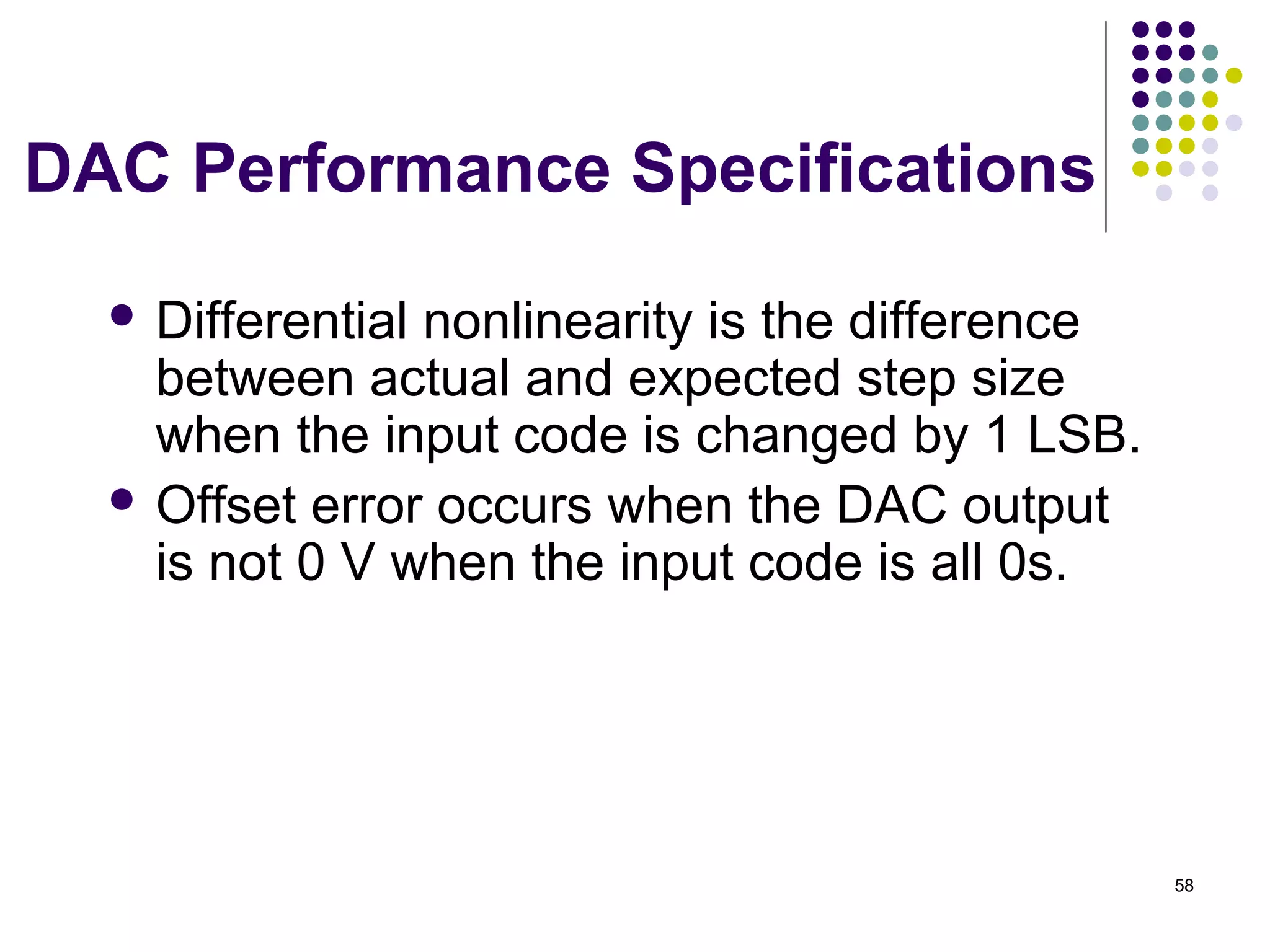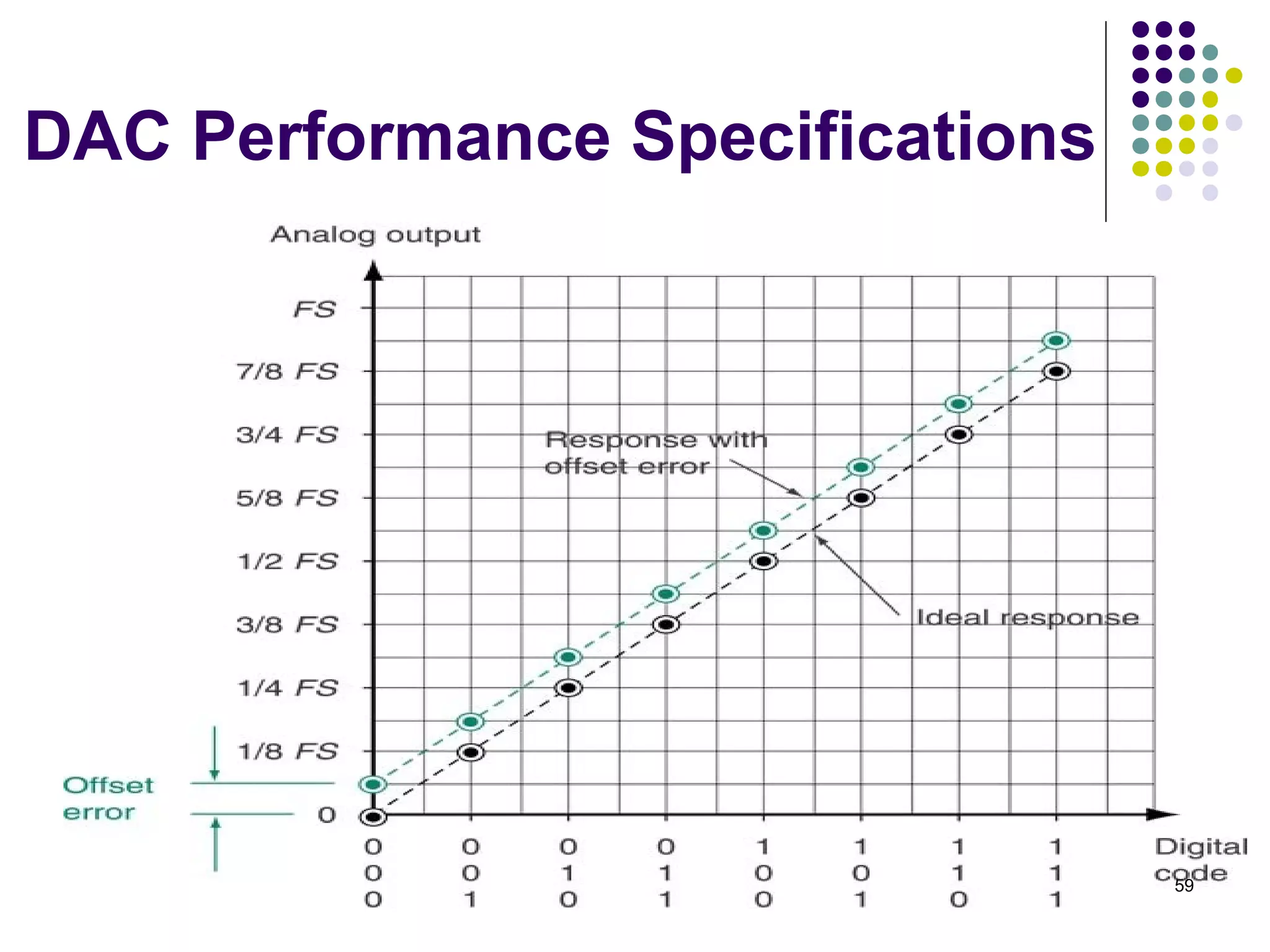The document discusses analog to digital conversion. It begins by explaining the difference between analog and digital signals. It then provides examples of applications that require analog to digital conversion like microphones and thermocouples. The document discusses the two main steps in analog to digital conversion - quantization, which breaks down the analog value into discrete states, and encoding, which assigns a digital value to each state. It also discusses factors that affect accuracy like resolution and sampling rate. Finally, it describes several types of analog to digital converters like flash ADCs, sigma-delta ADCs, dual slope ADCs, and successive approximation ADCs.
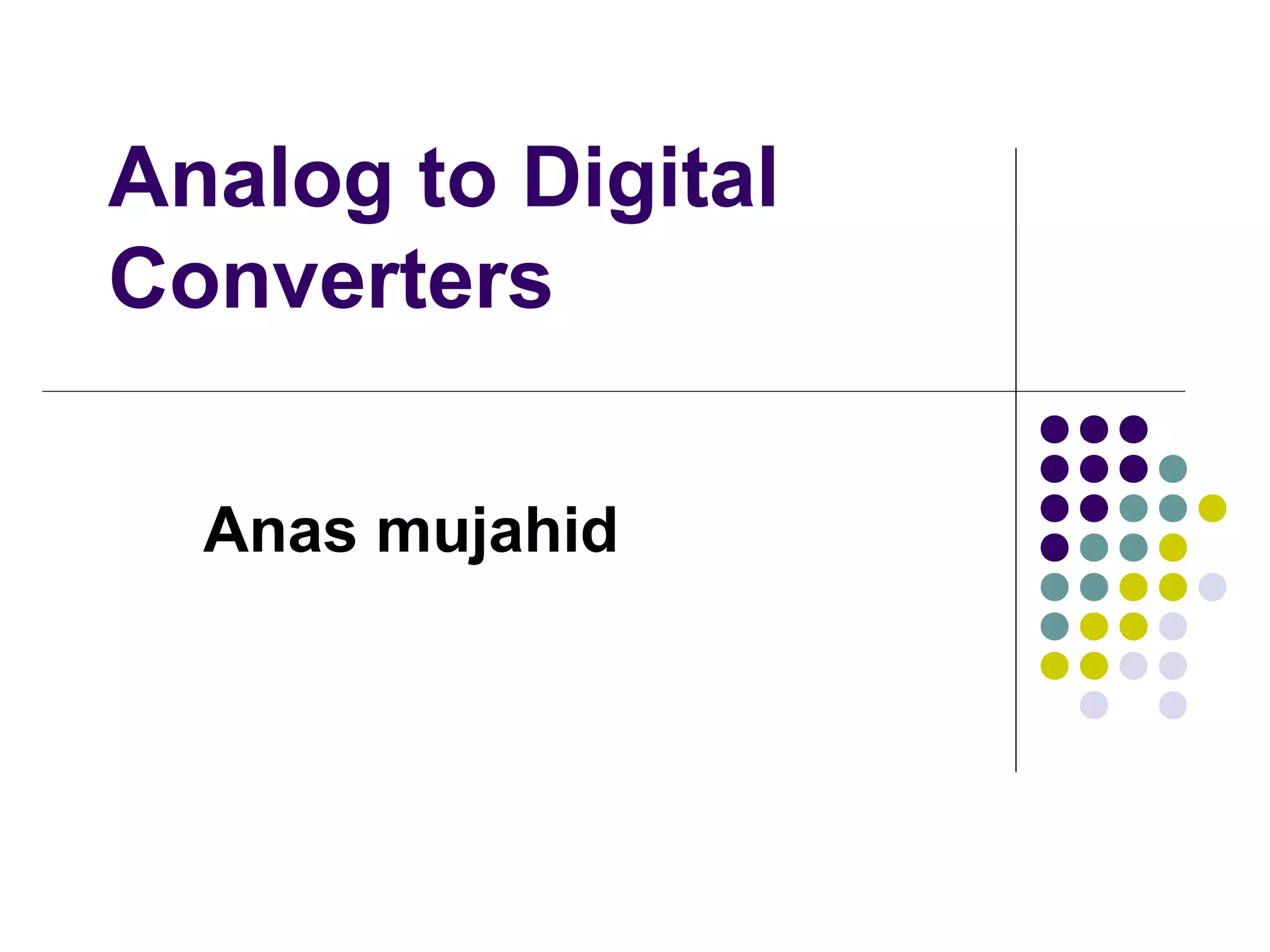

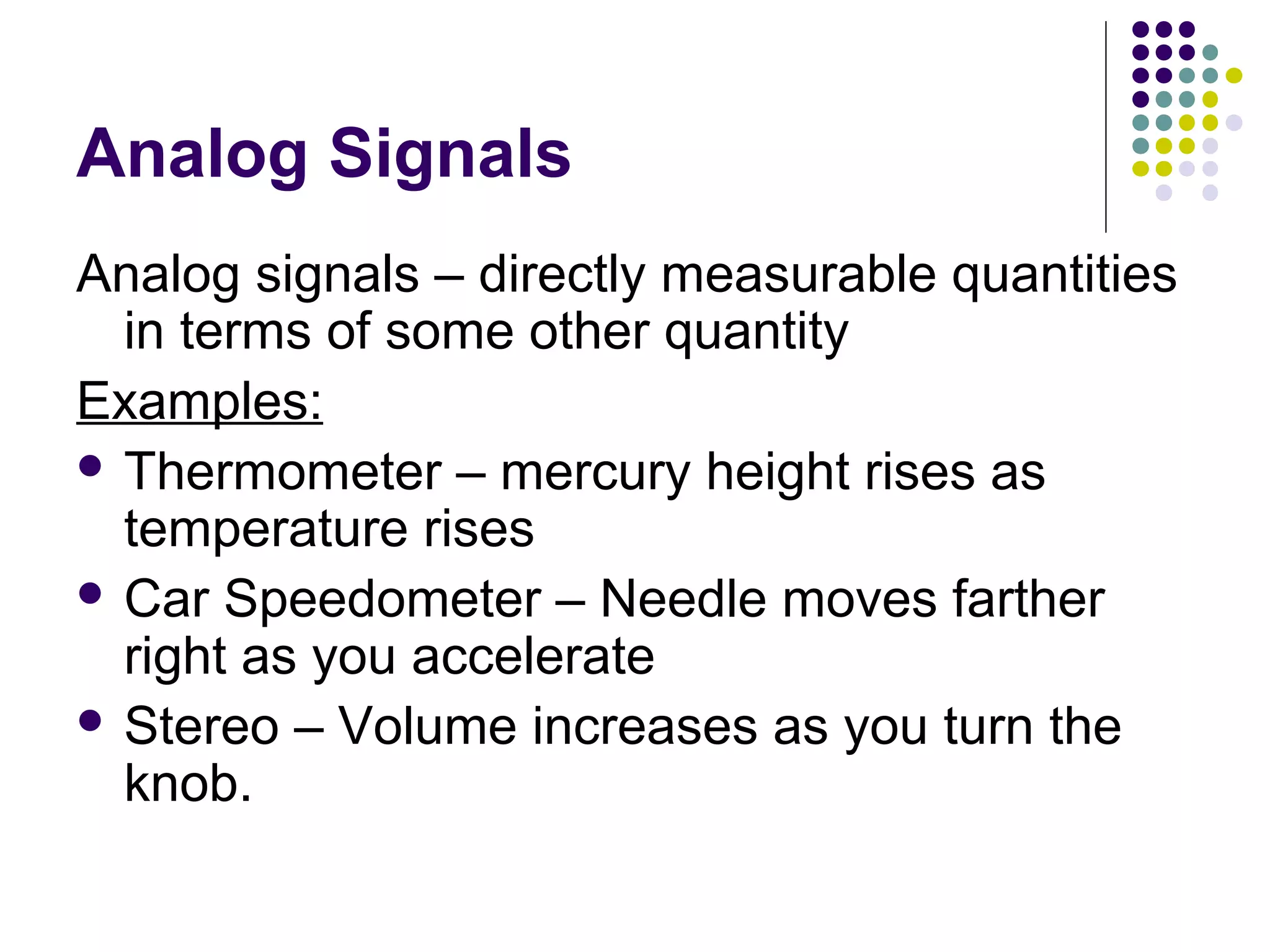

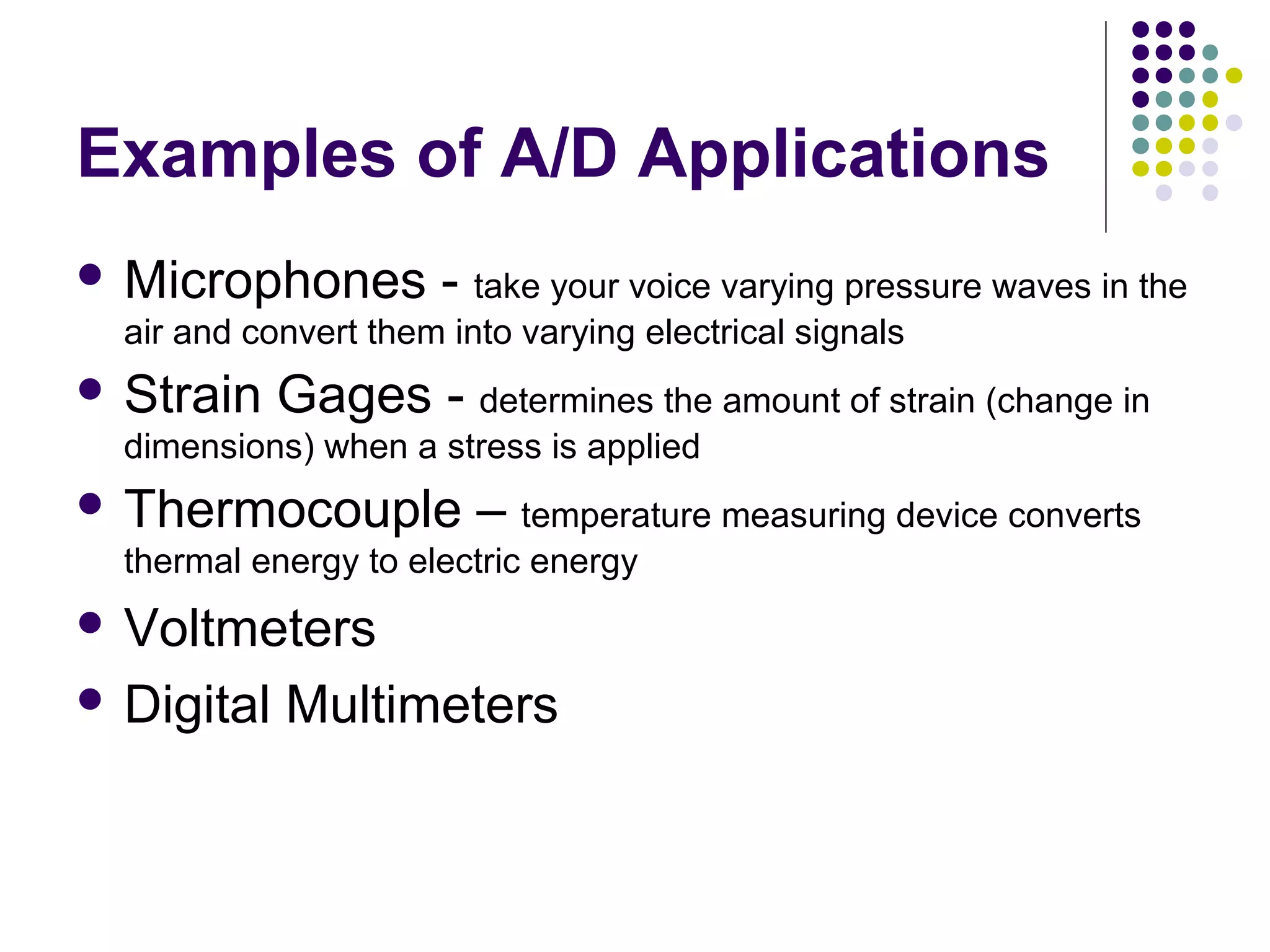
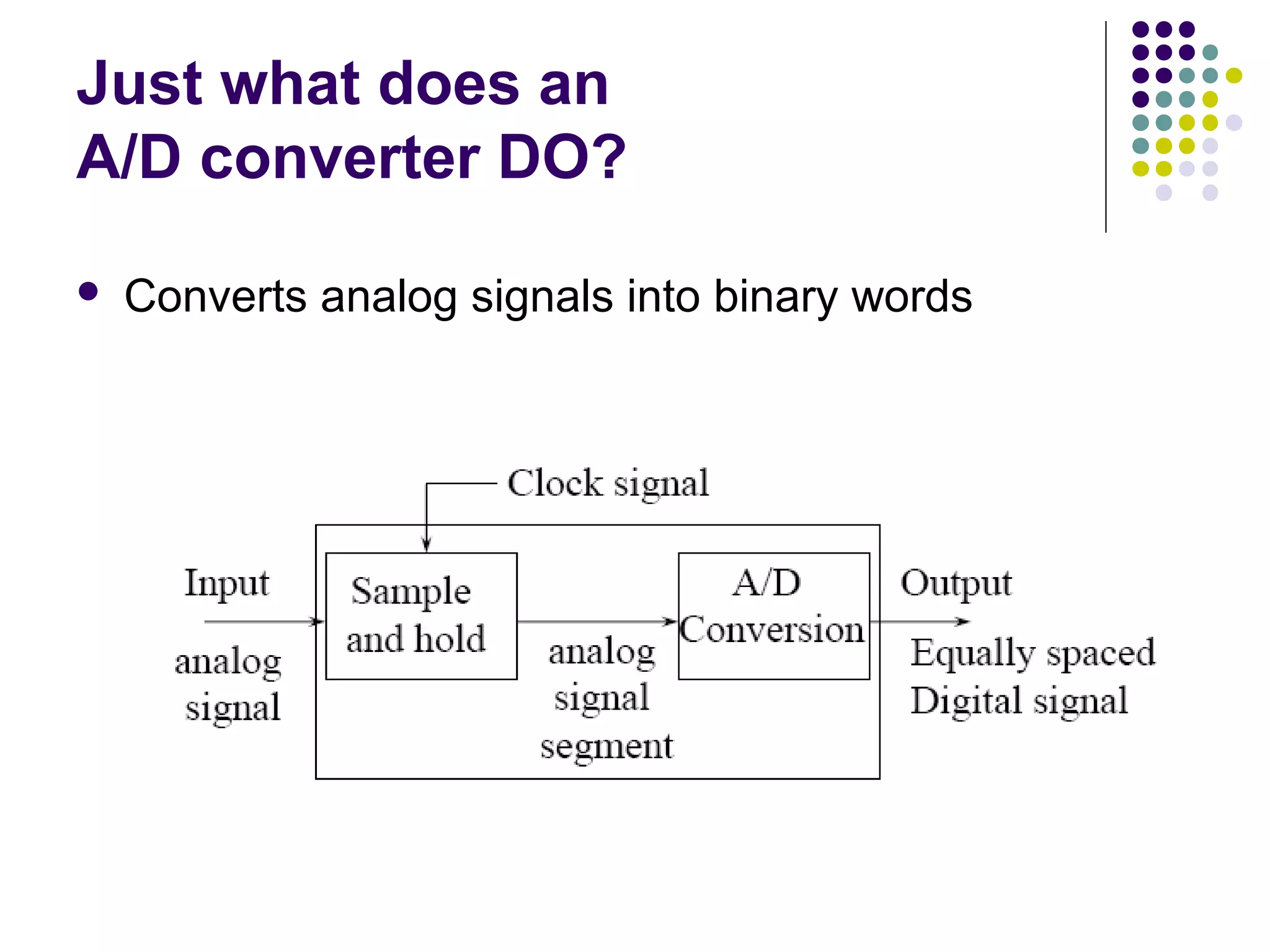
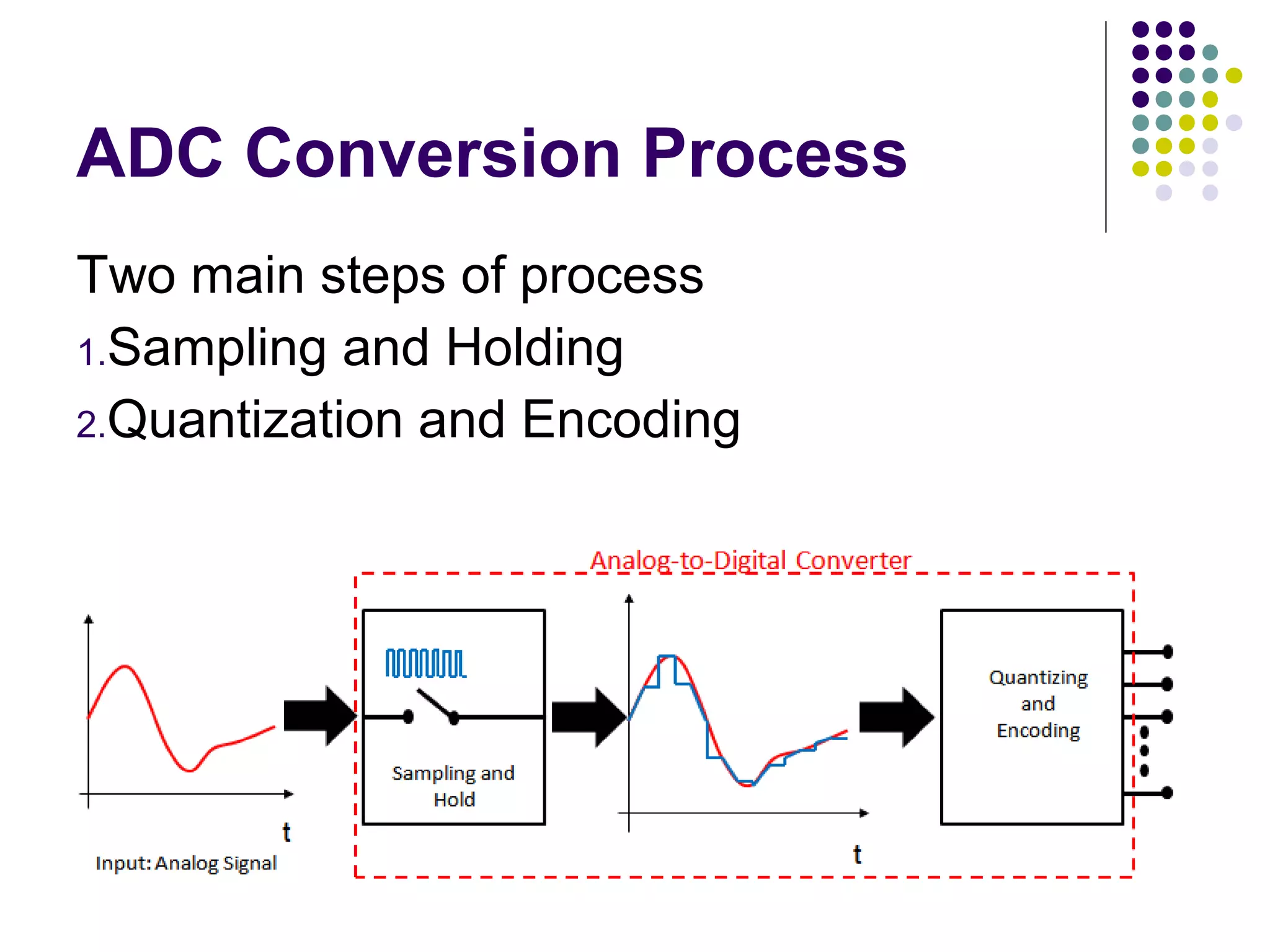
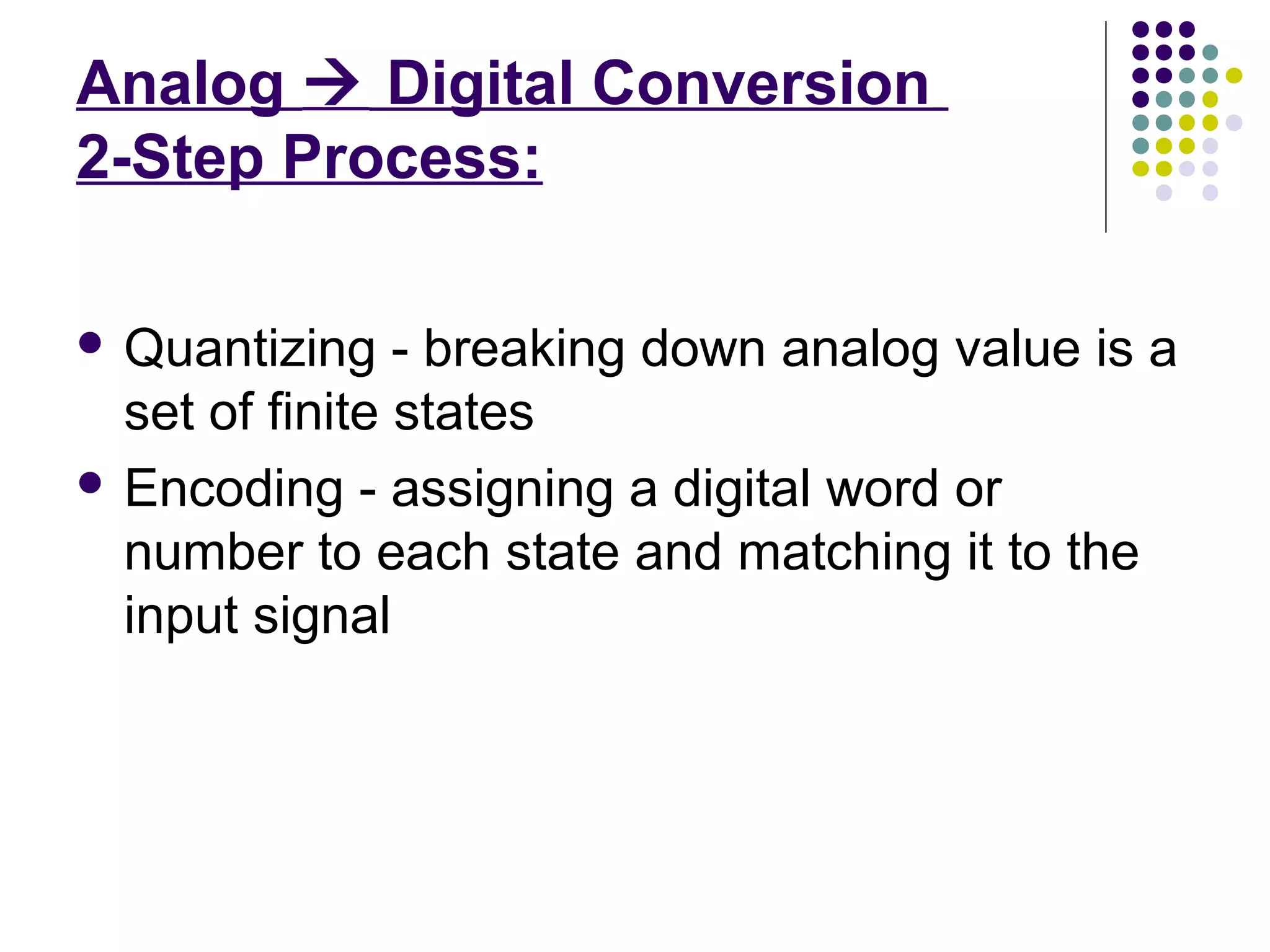


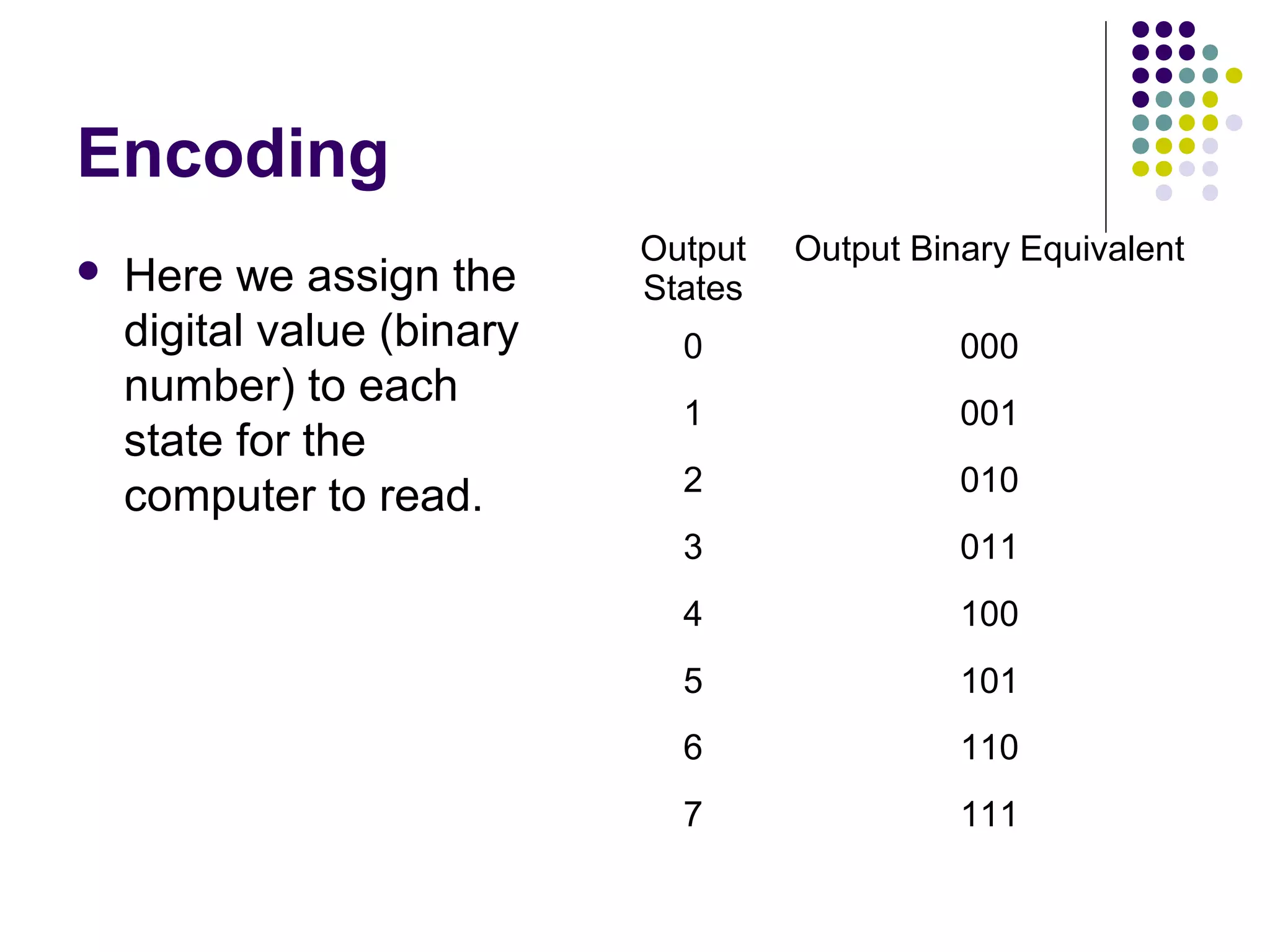

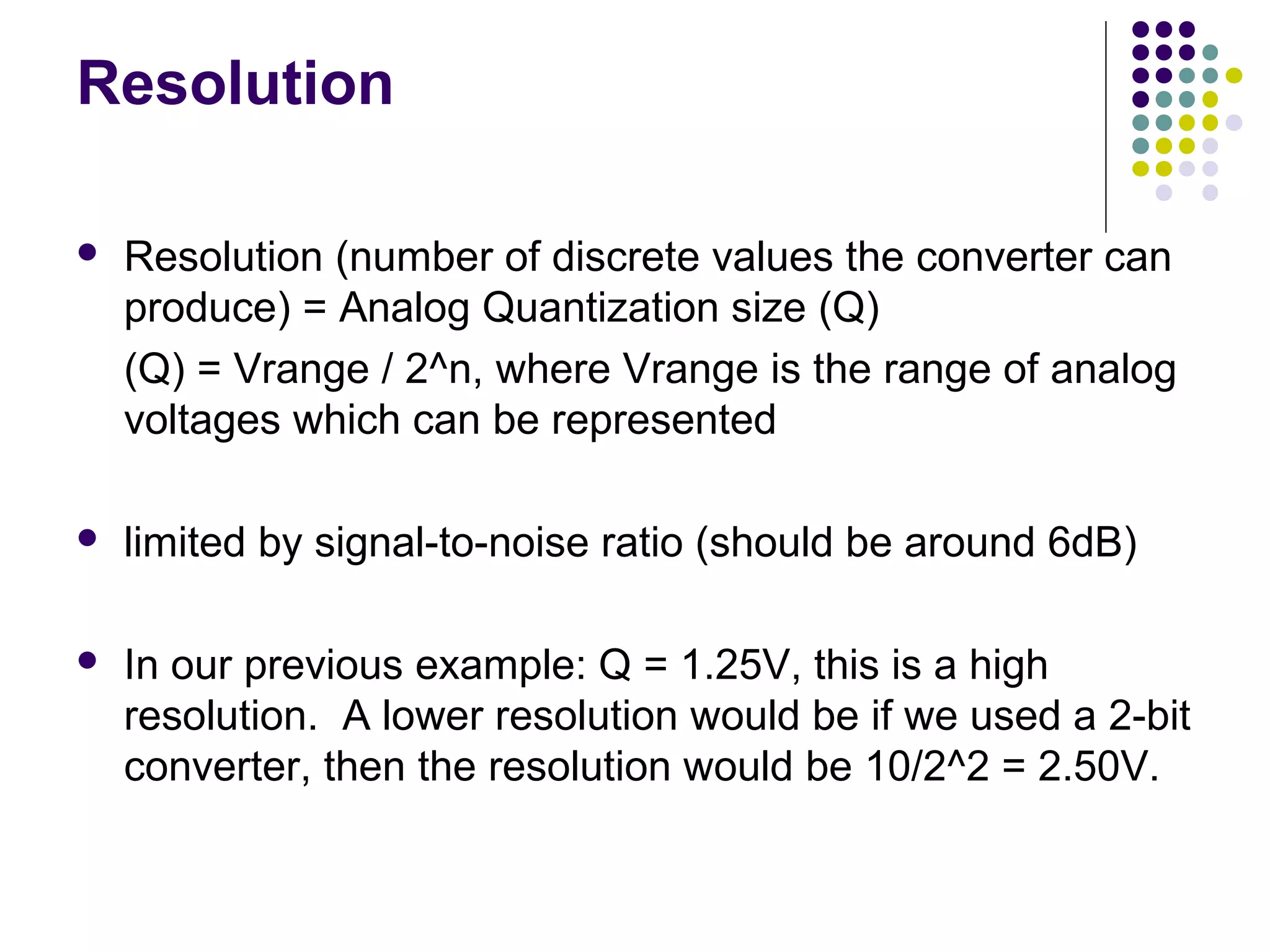

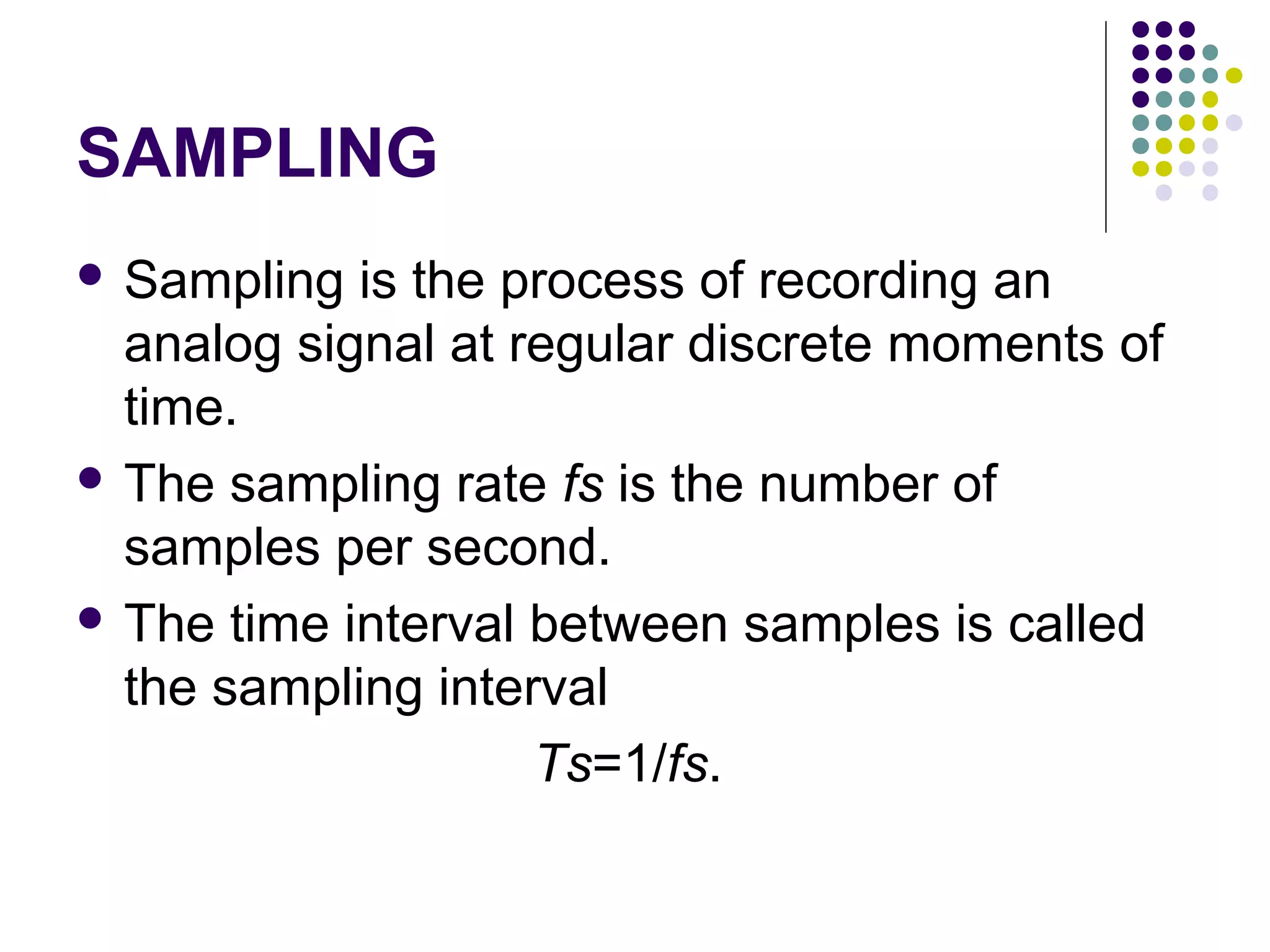
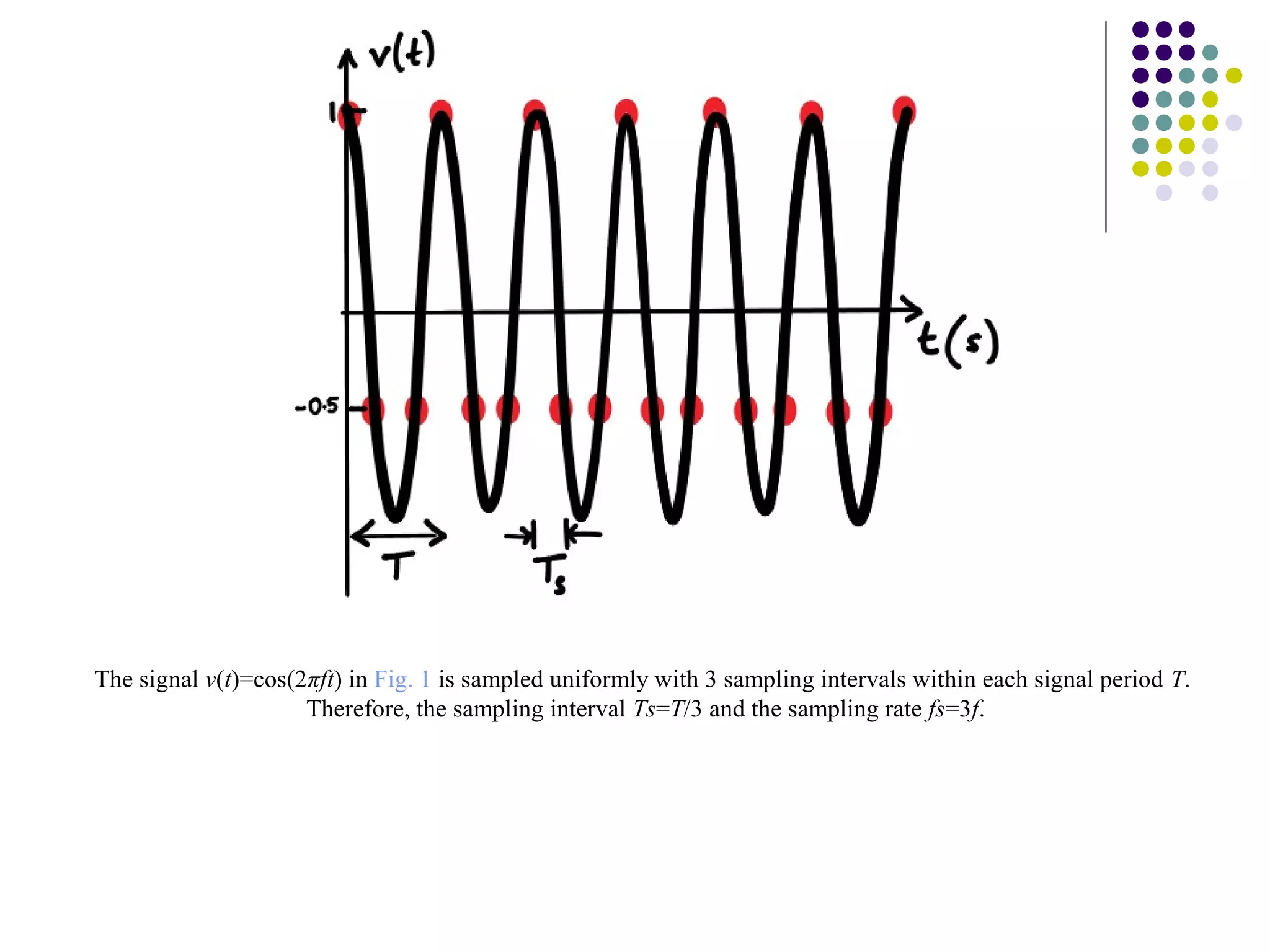
![The samples from above figure are shown as the sequence v[n] indexed by integer values of n.](https://image.slidesharecdn.com/adcf051-160601154100/75/Analog-to-Digital-Converters-17-2048.jpg)
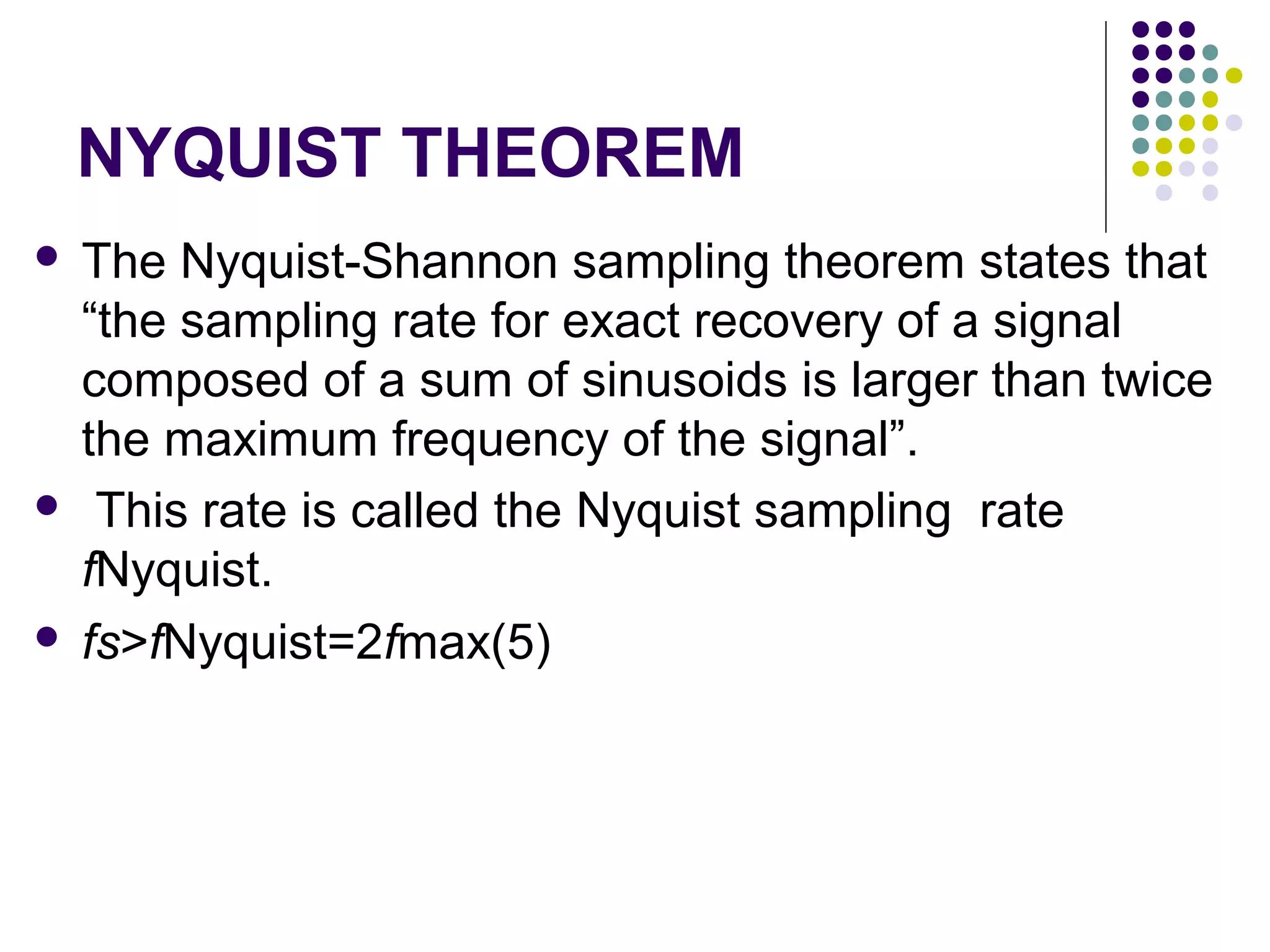
![QUANTIZATION
A sequence of samples like v[n] in Fig. 2 is not a
digital signal because the sample values can
potentially take on a continuous range of values.
In order to complete analog to digital conversion,
each sample value is mapped to a discrete level
(represented by a sequence of bits) in a process
called quantization.
In a m-bit quantizer, each quantization level is
represented with m bits, so that the number of
levels equals 2^m.](https://image.slidesharecdn.com/adcf051-160601154100/75/Analog-to-Digital-Converters-19-2048.jpg)
![Overlaid on the samples v[n] from Fig. 2 is a 3-bit quantizer with 8 uniformly spaced quantization levels.
The quantizer approximates each sample value in v[n] to its nearest level value (shown on the left),
producing the quantized sequence vQ[n].](https://image.slidesharecdn.com/adcf051-160601154100/75/Analog-to-Digital-Converters-20-2048.jpg)
